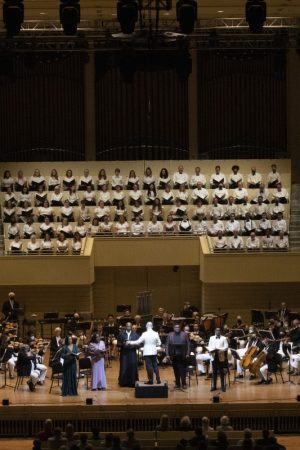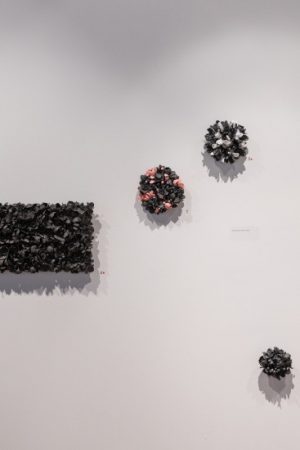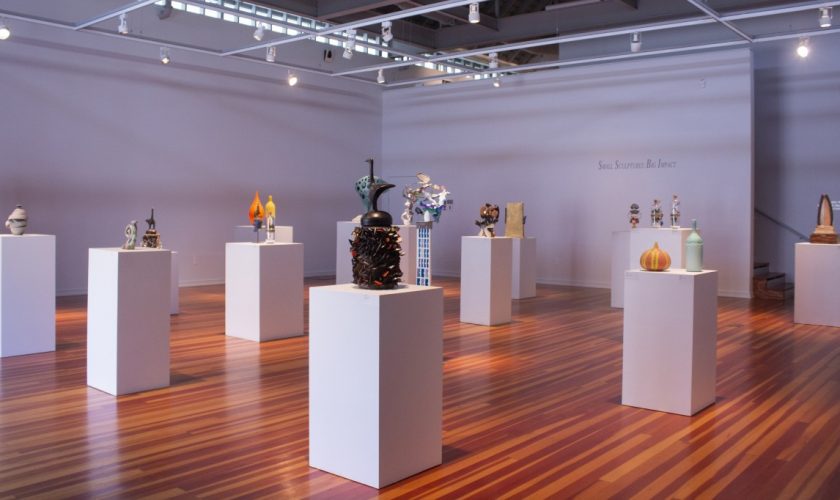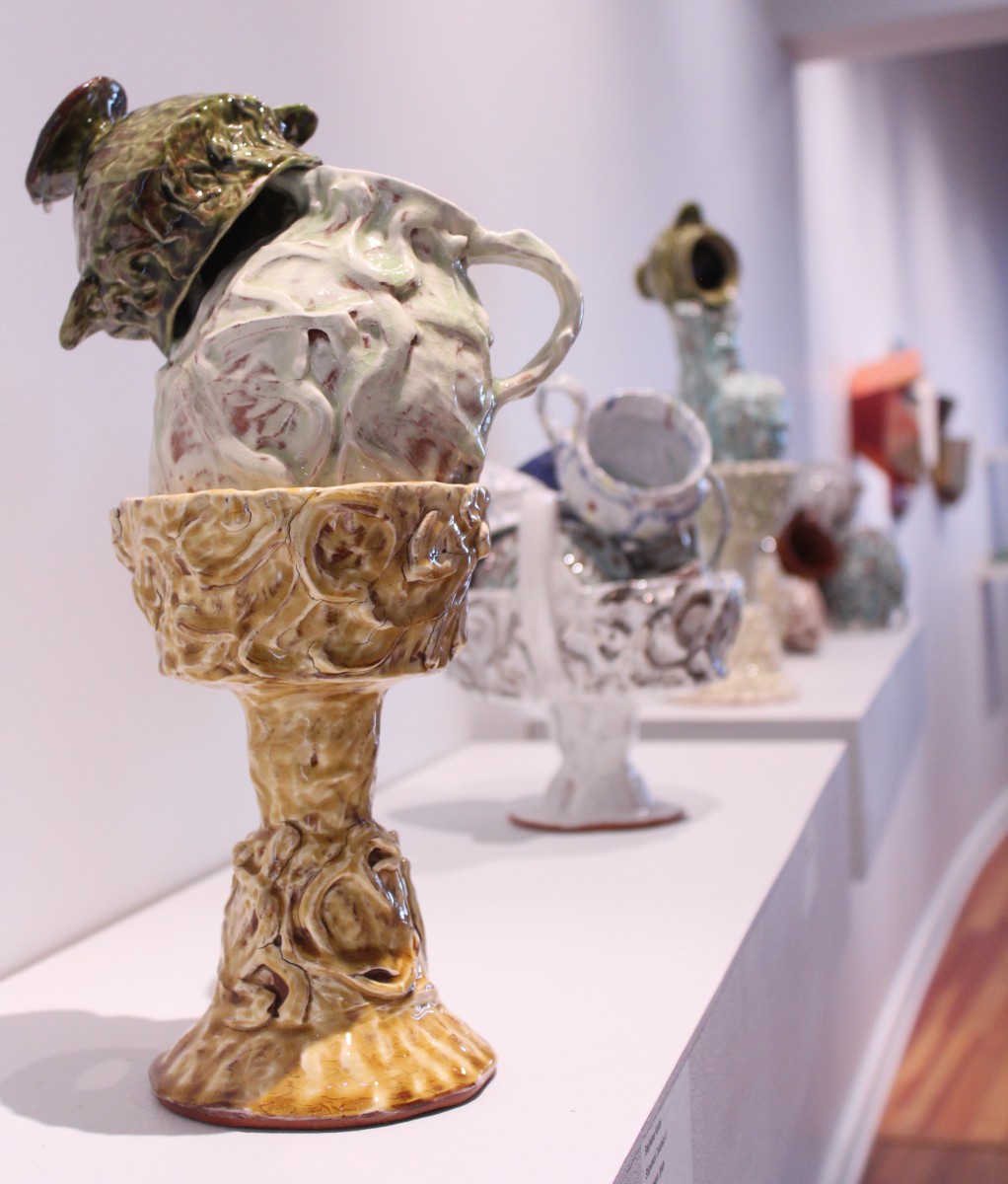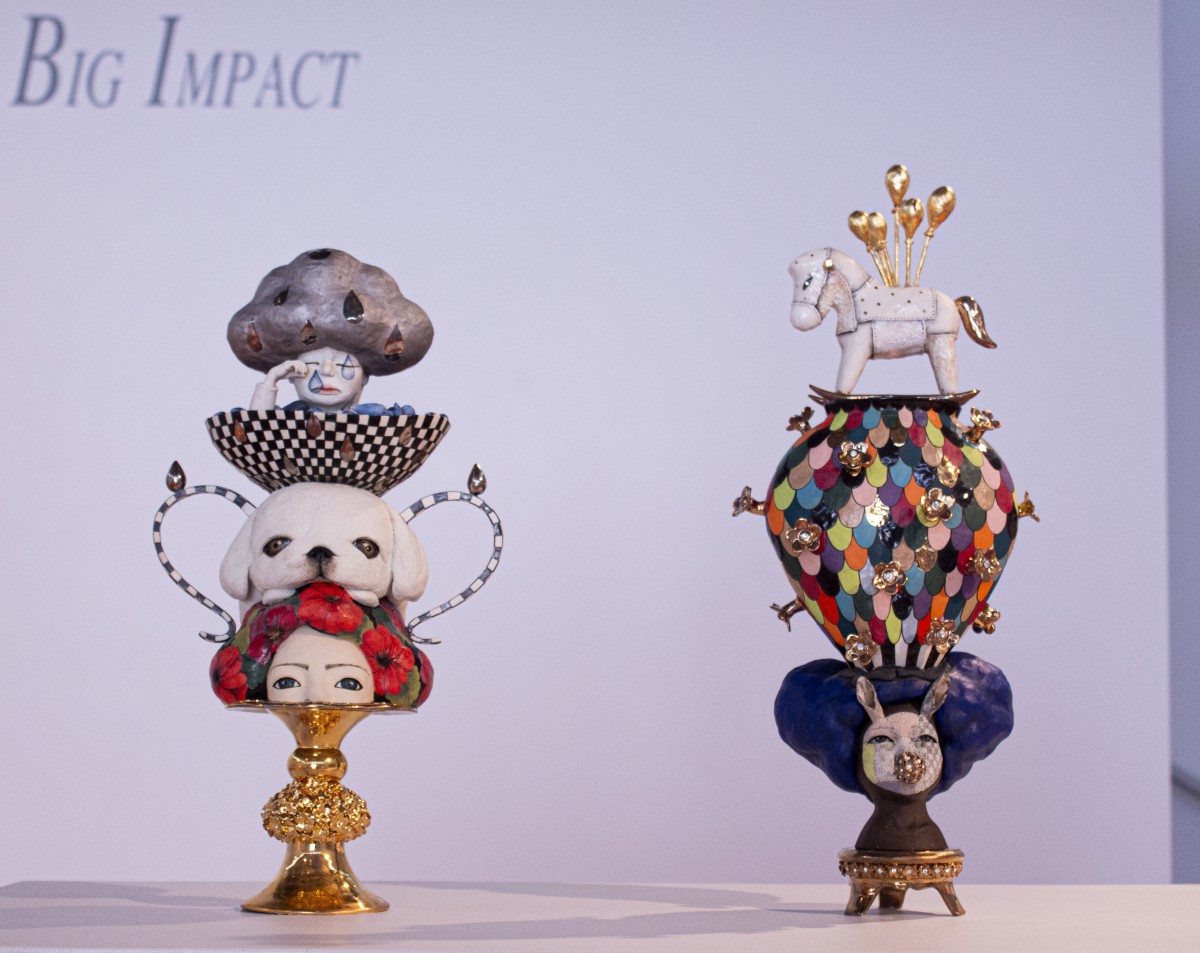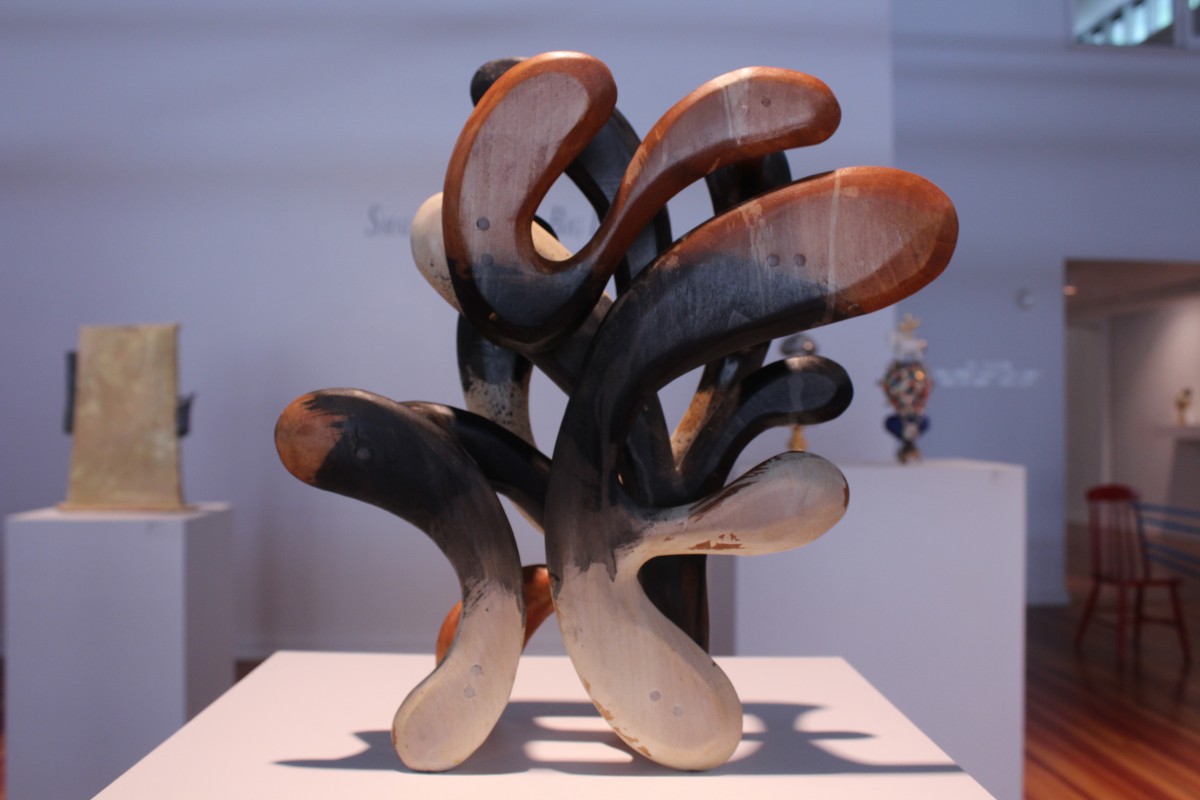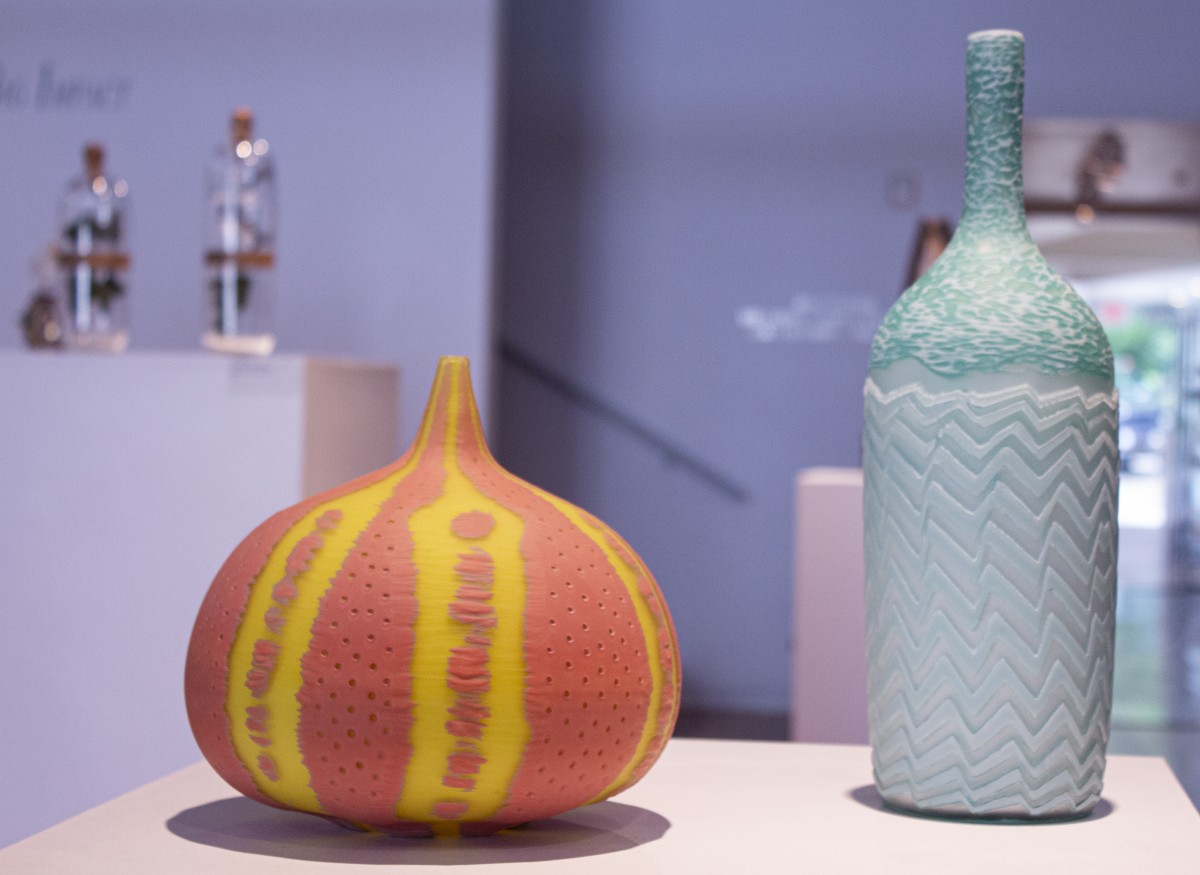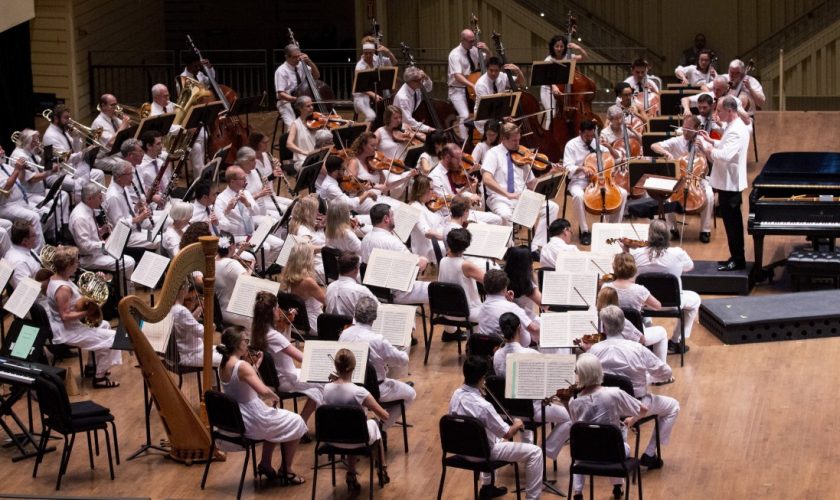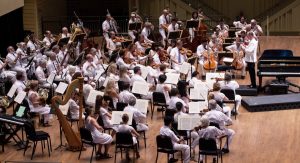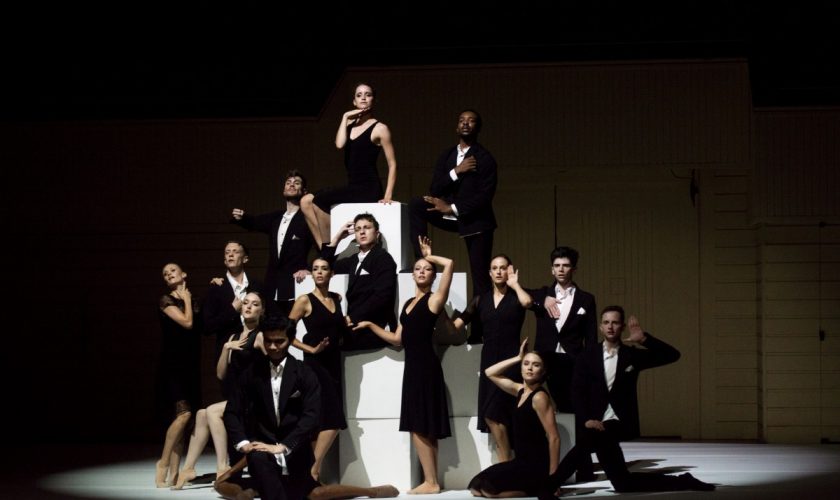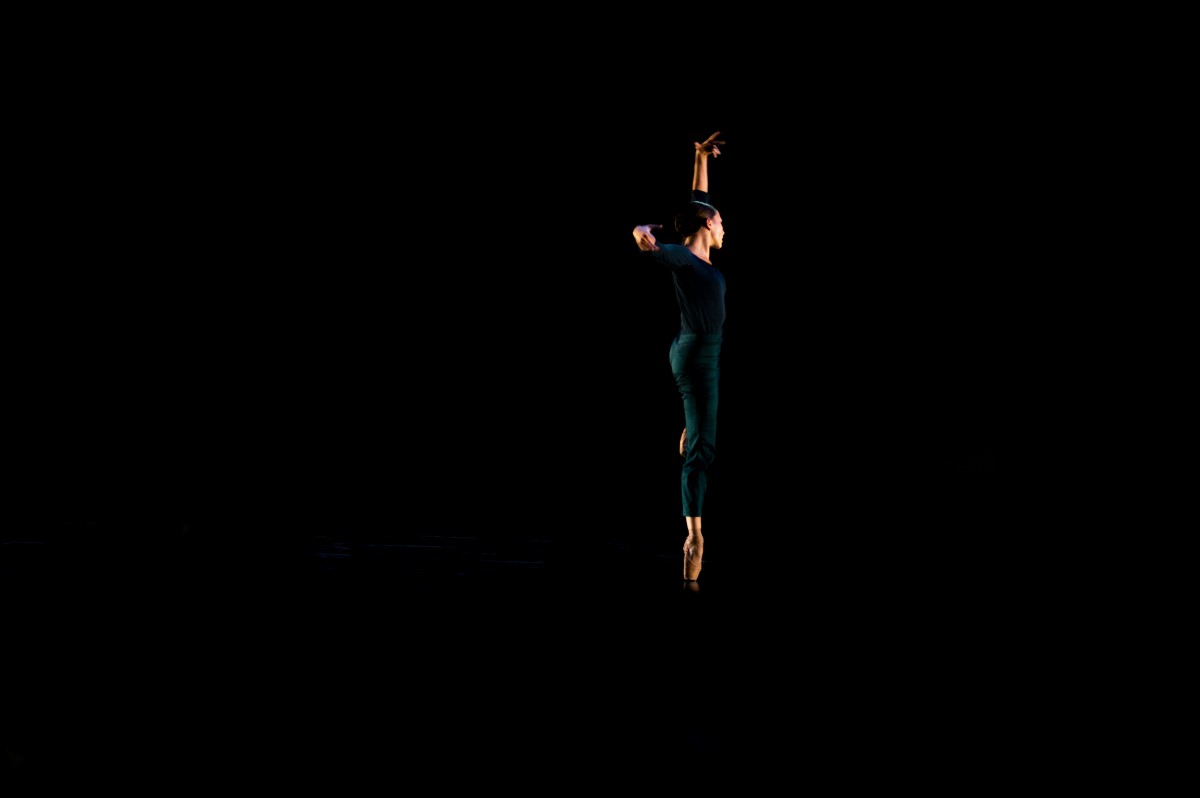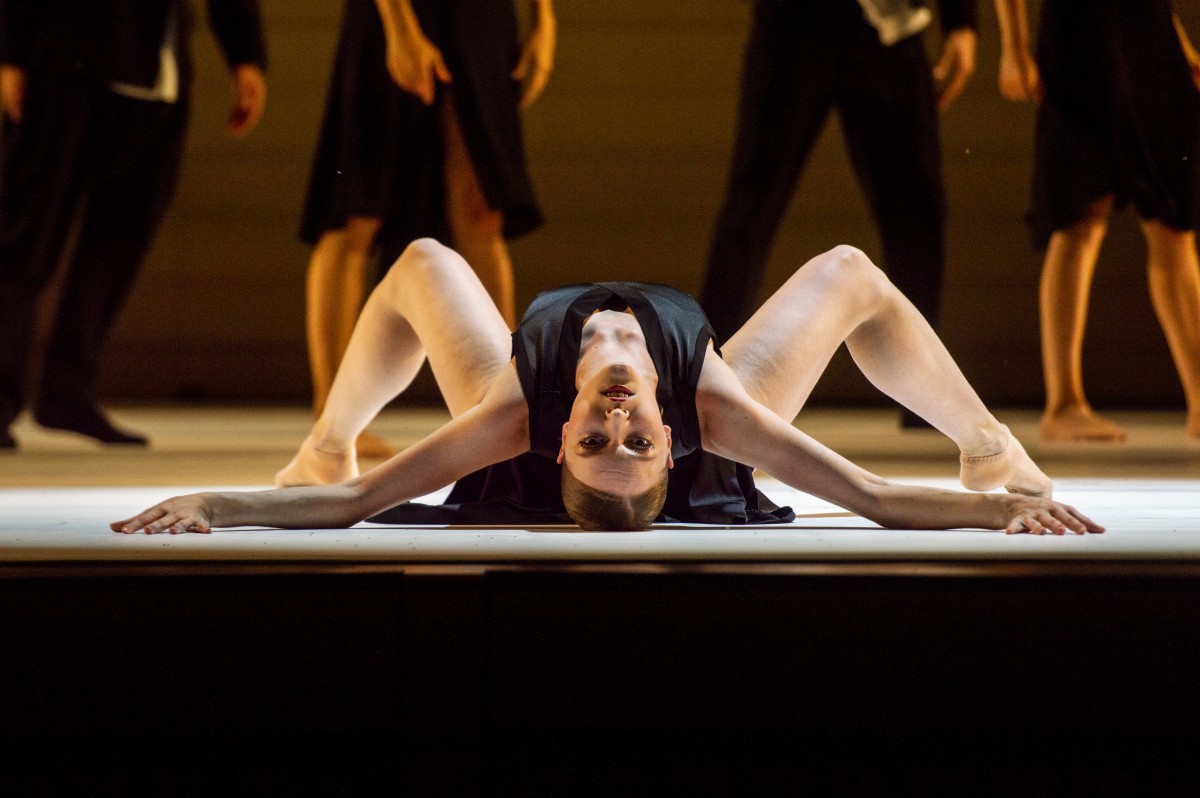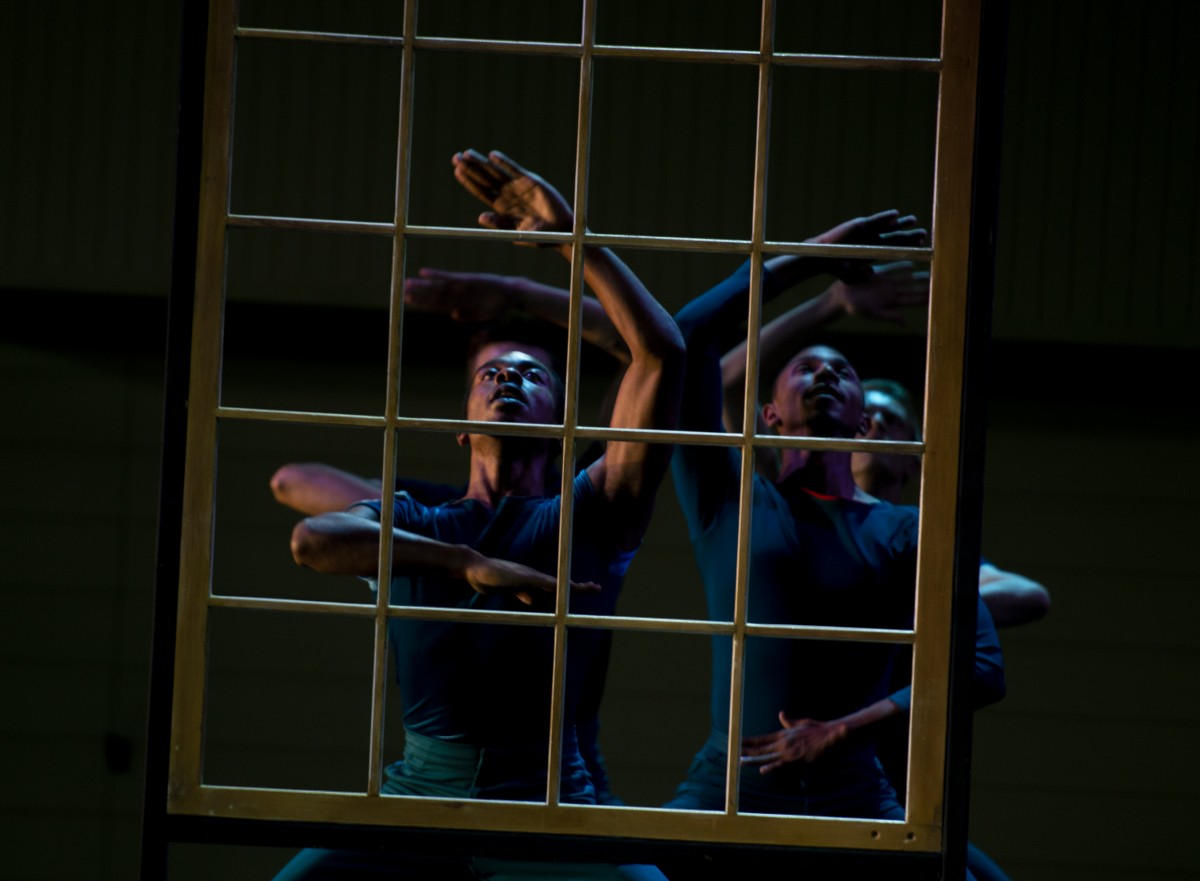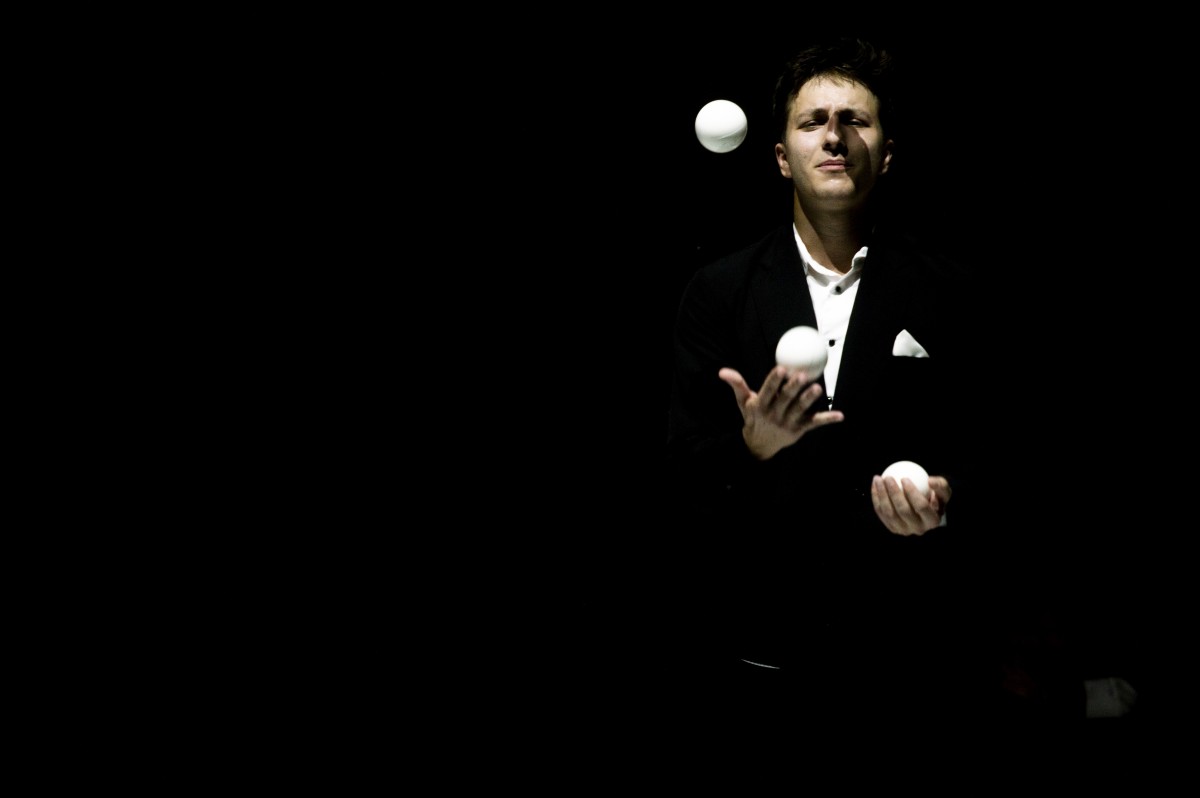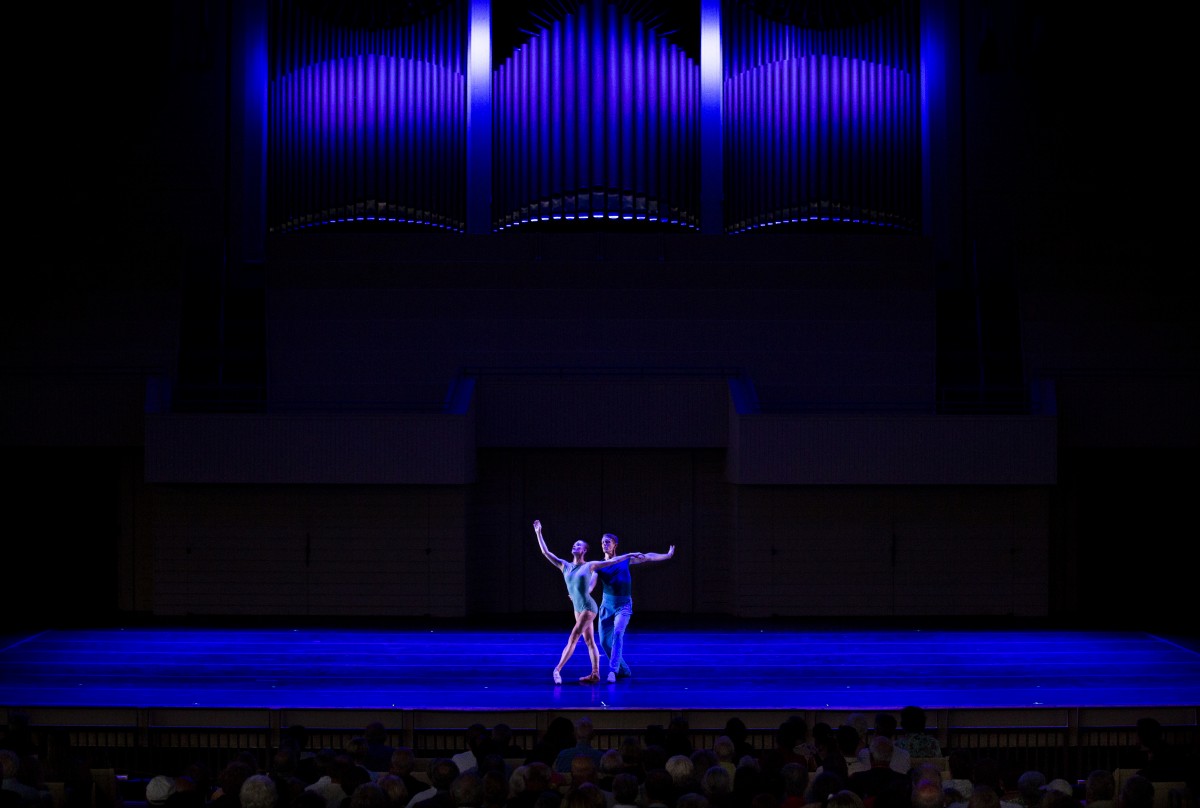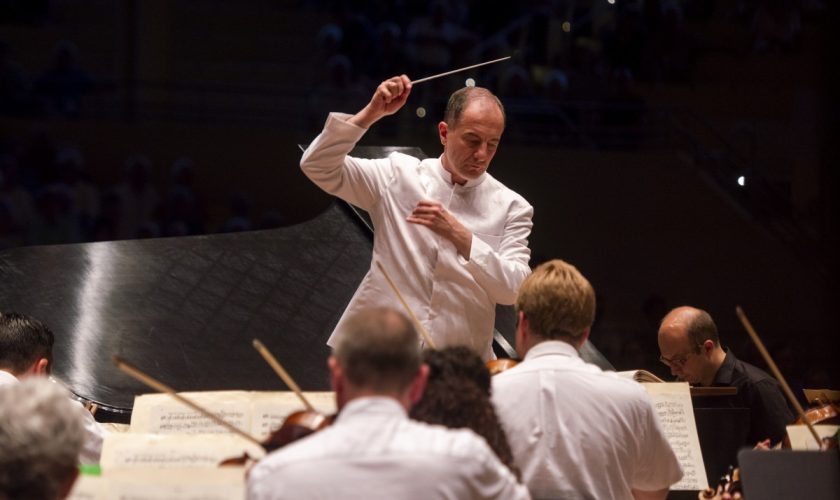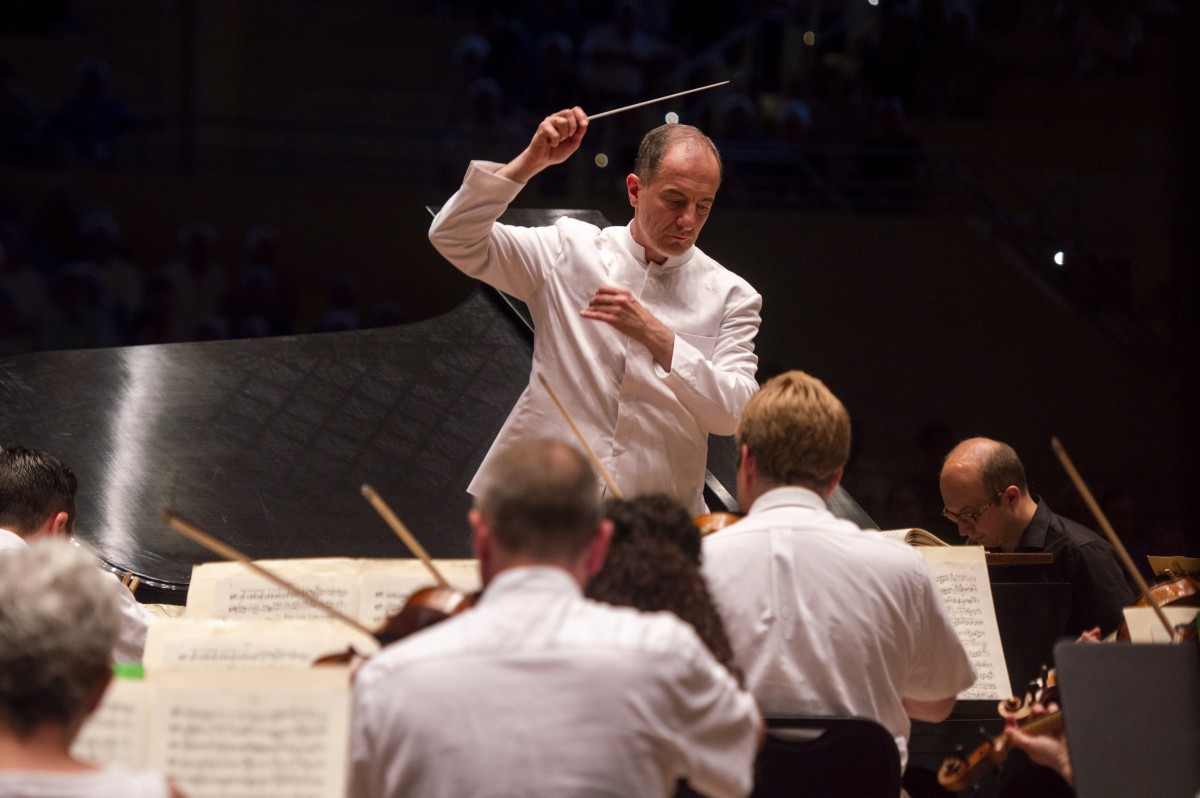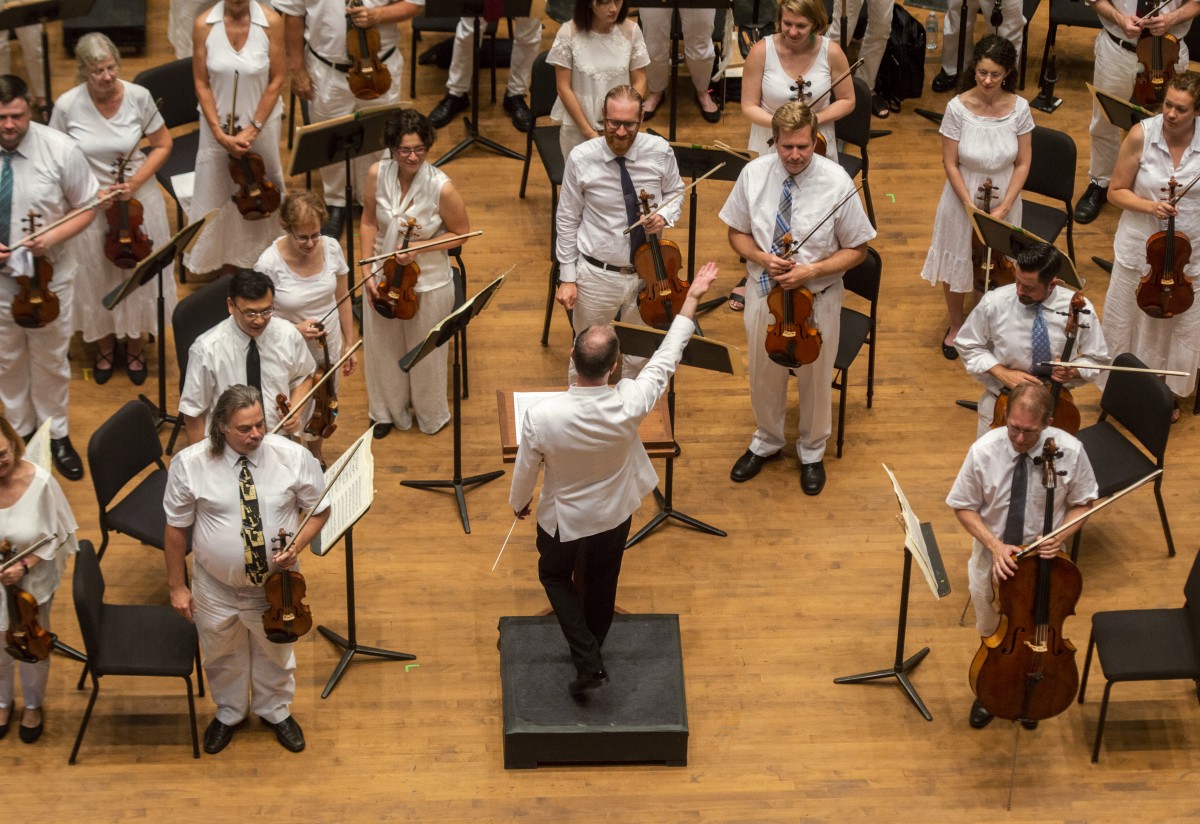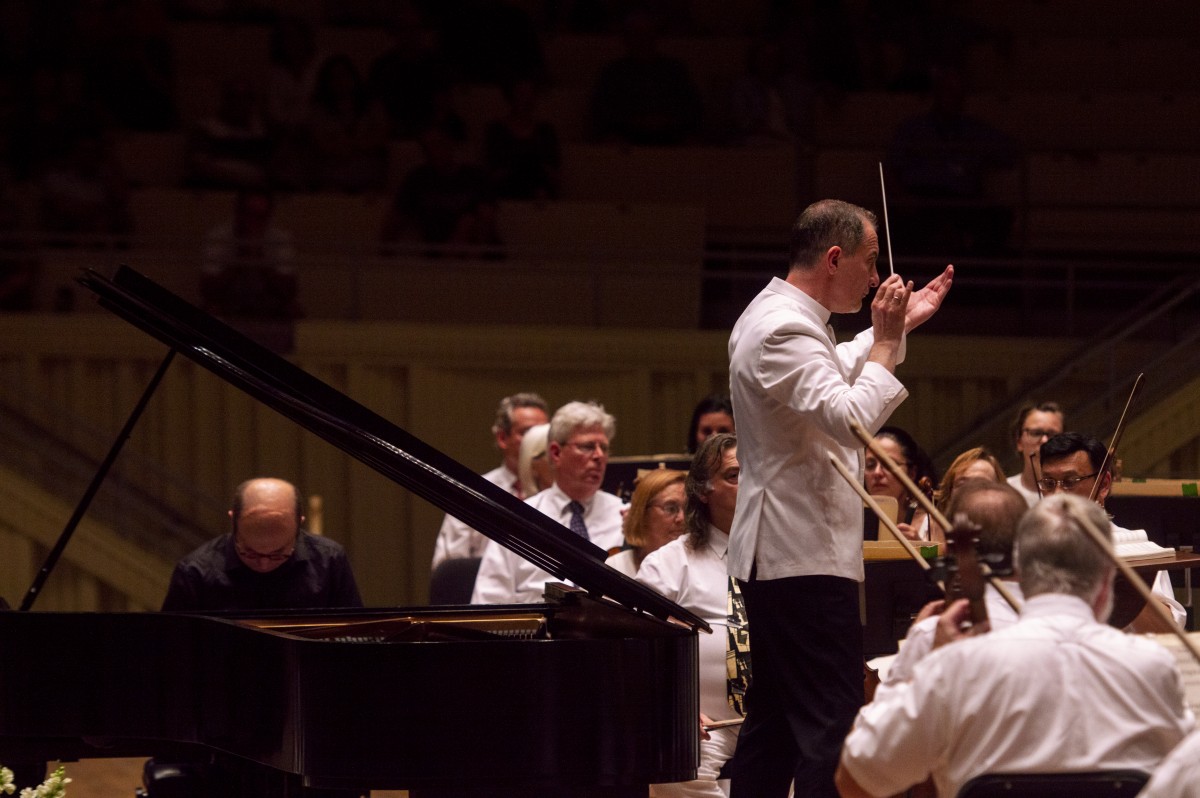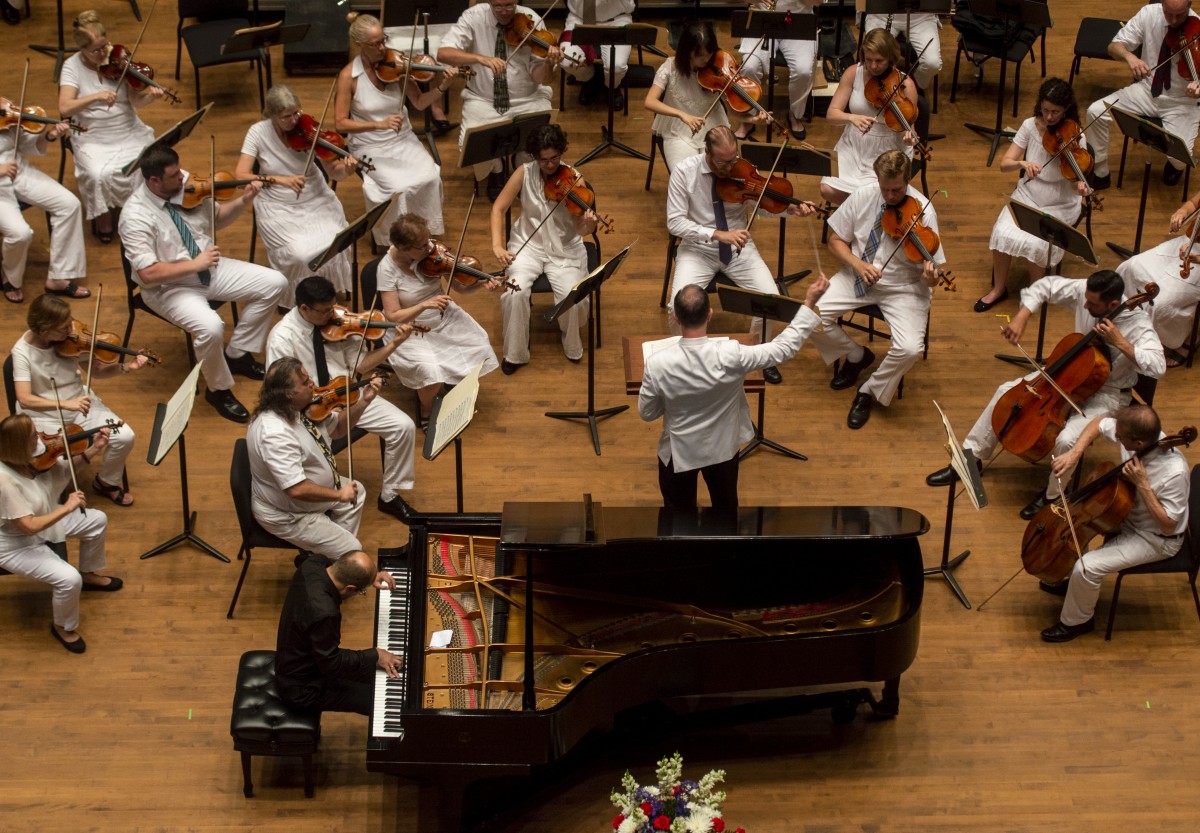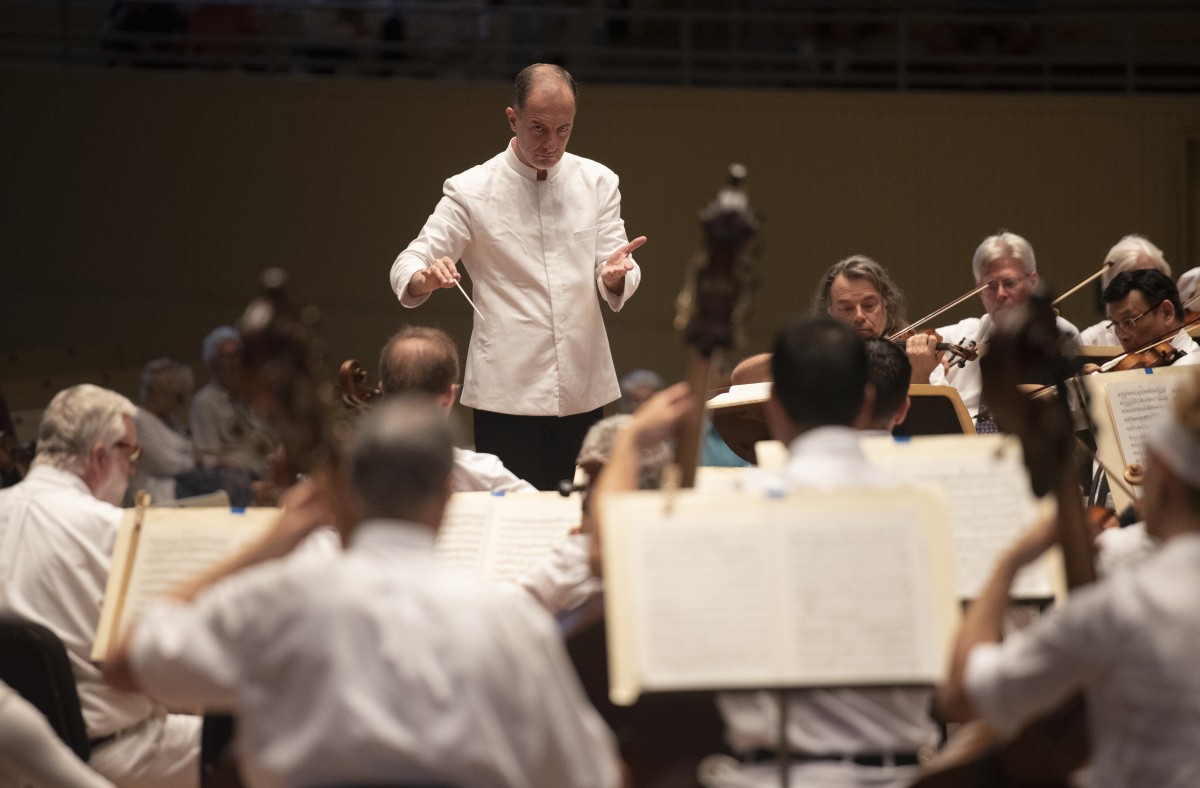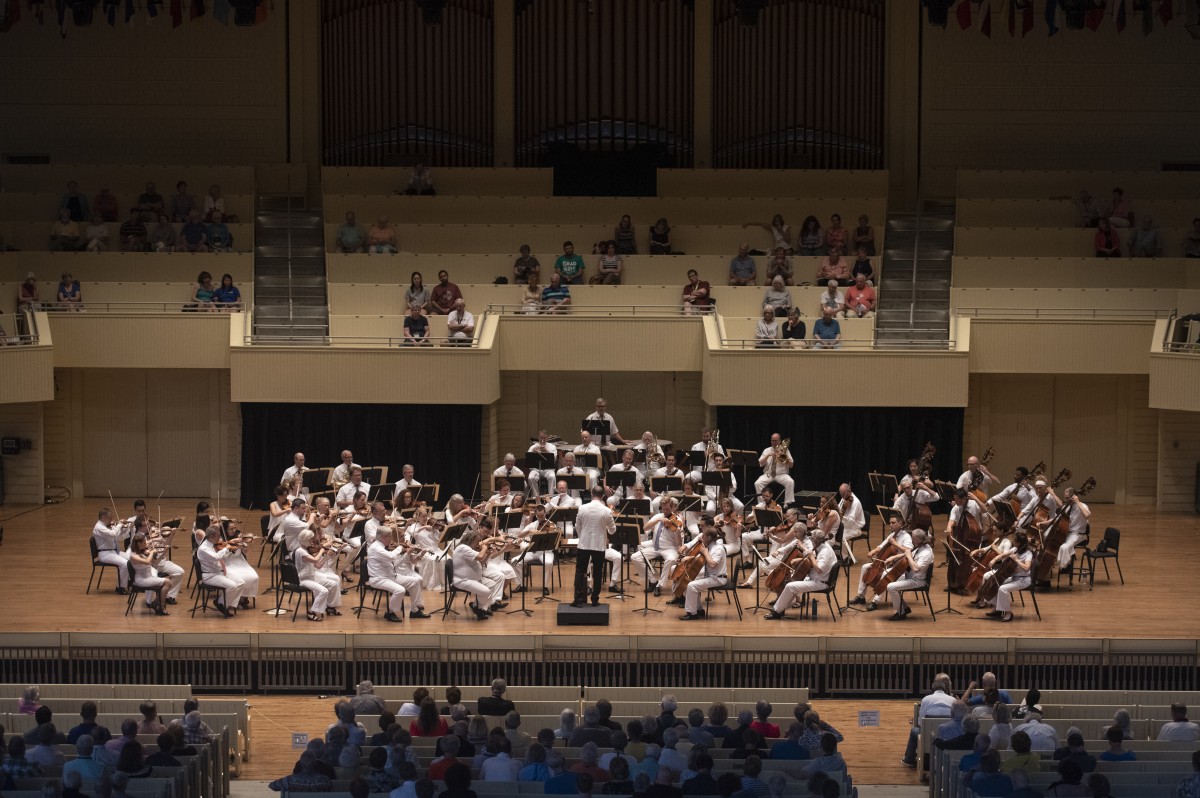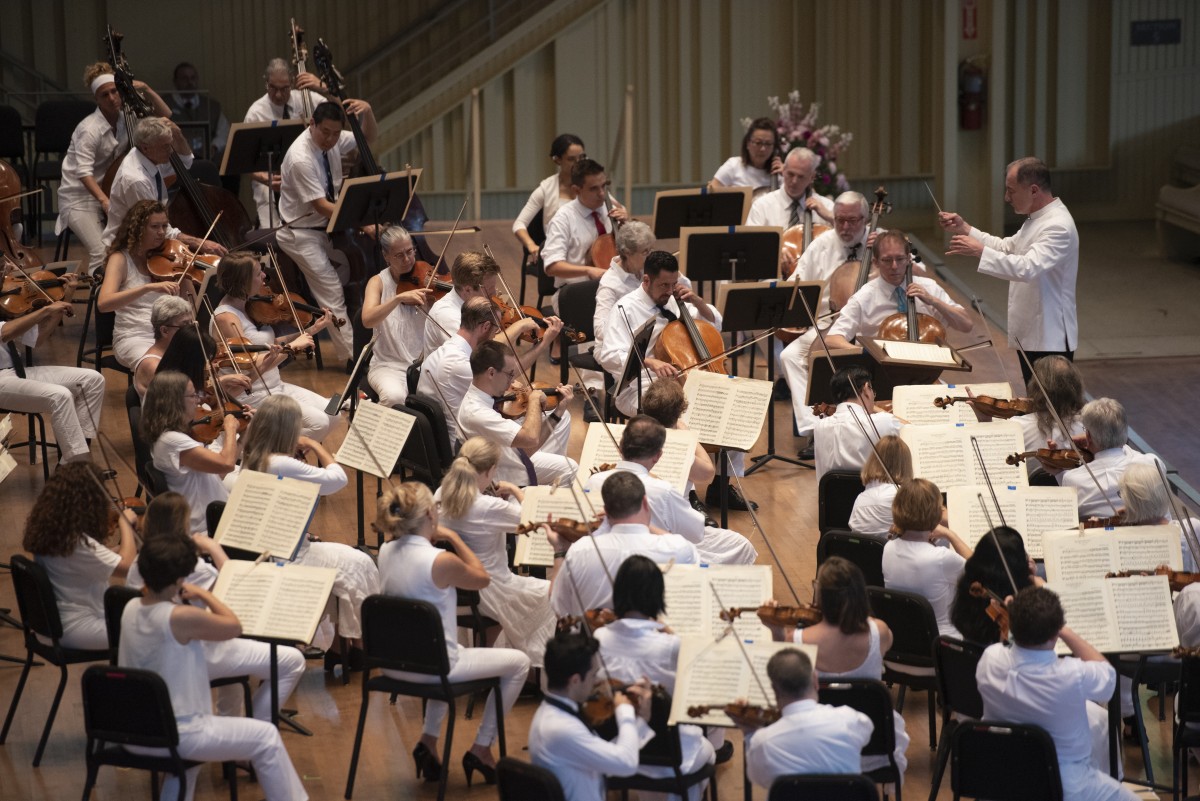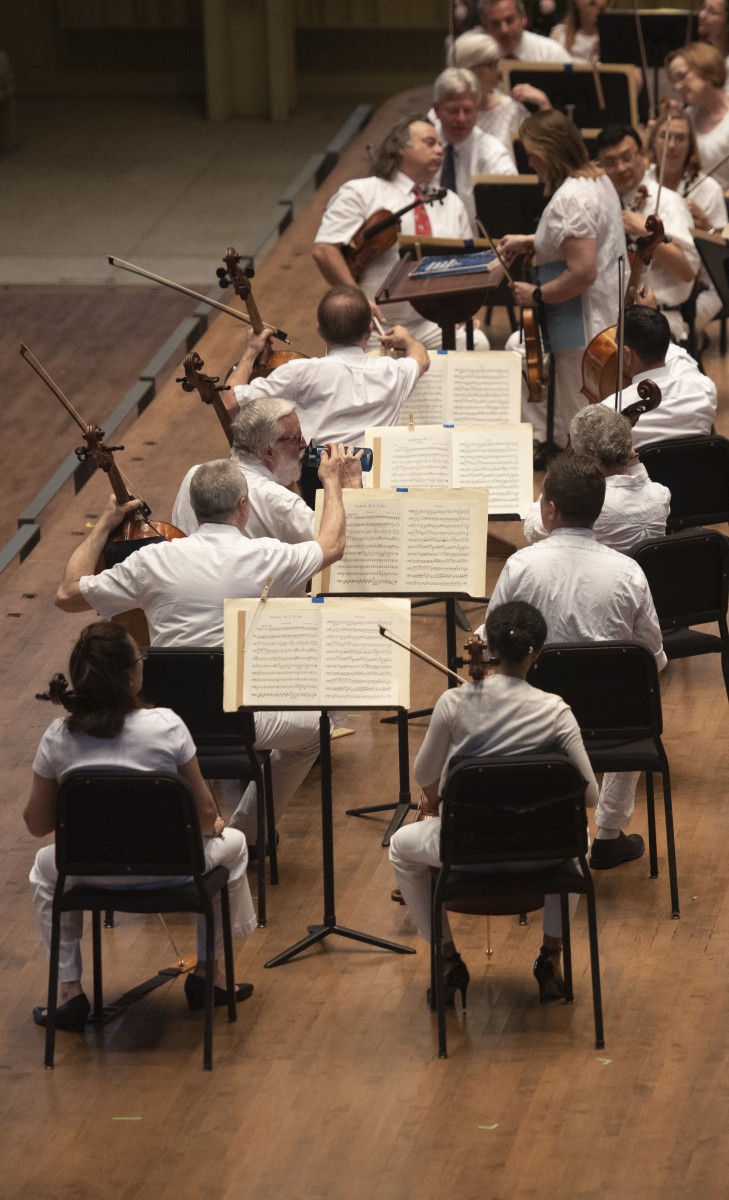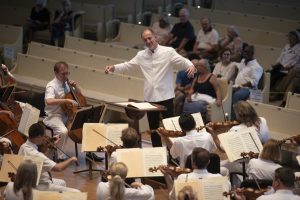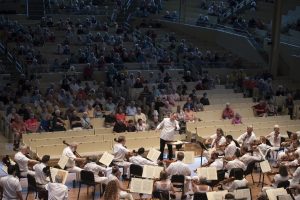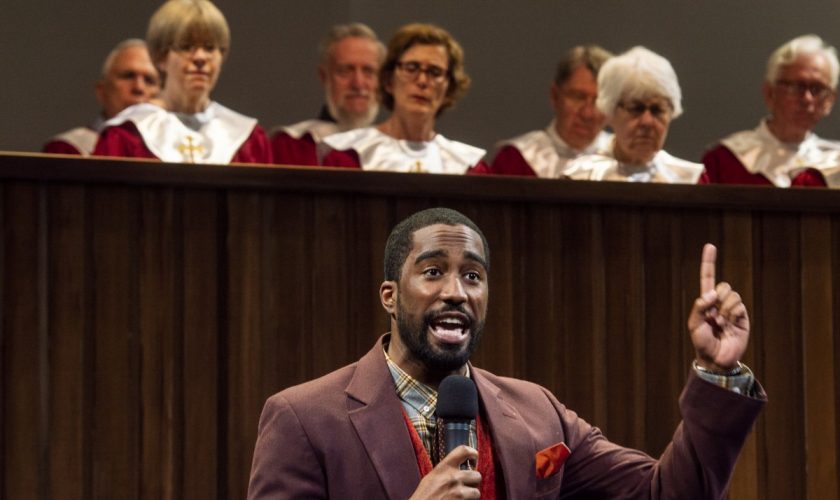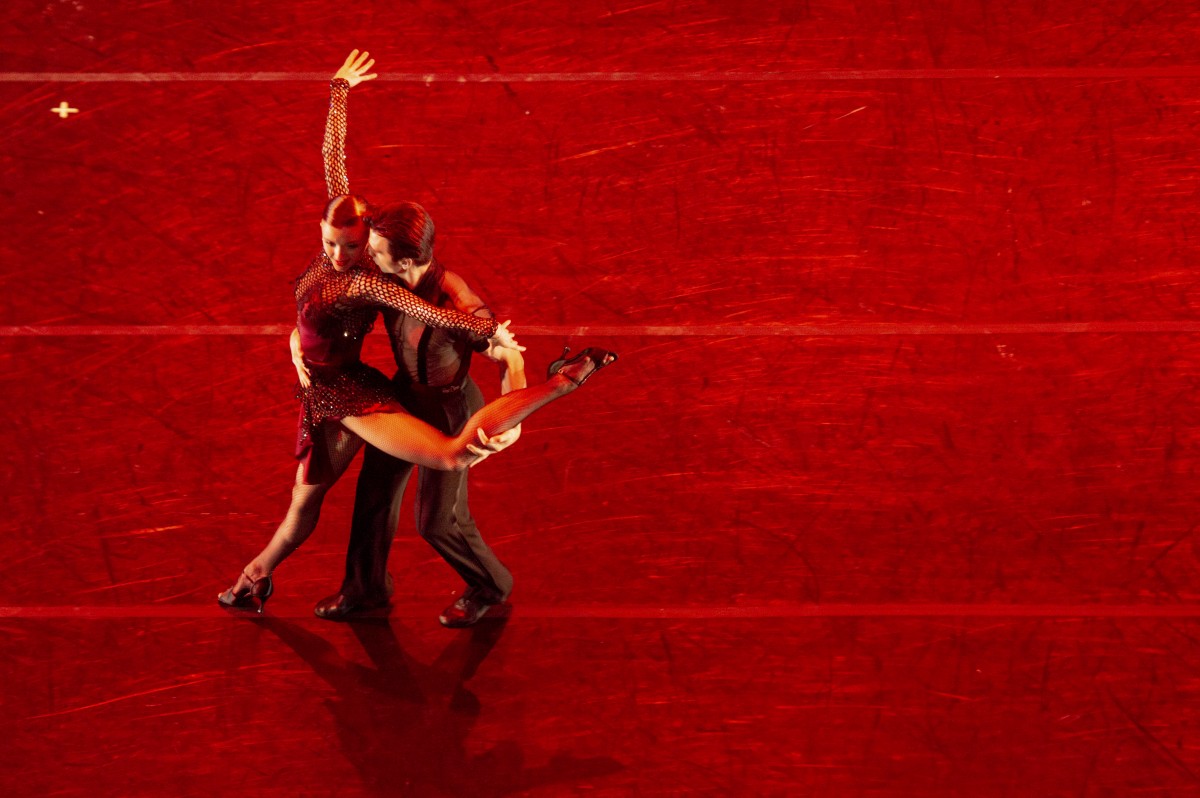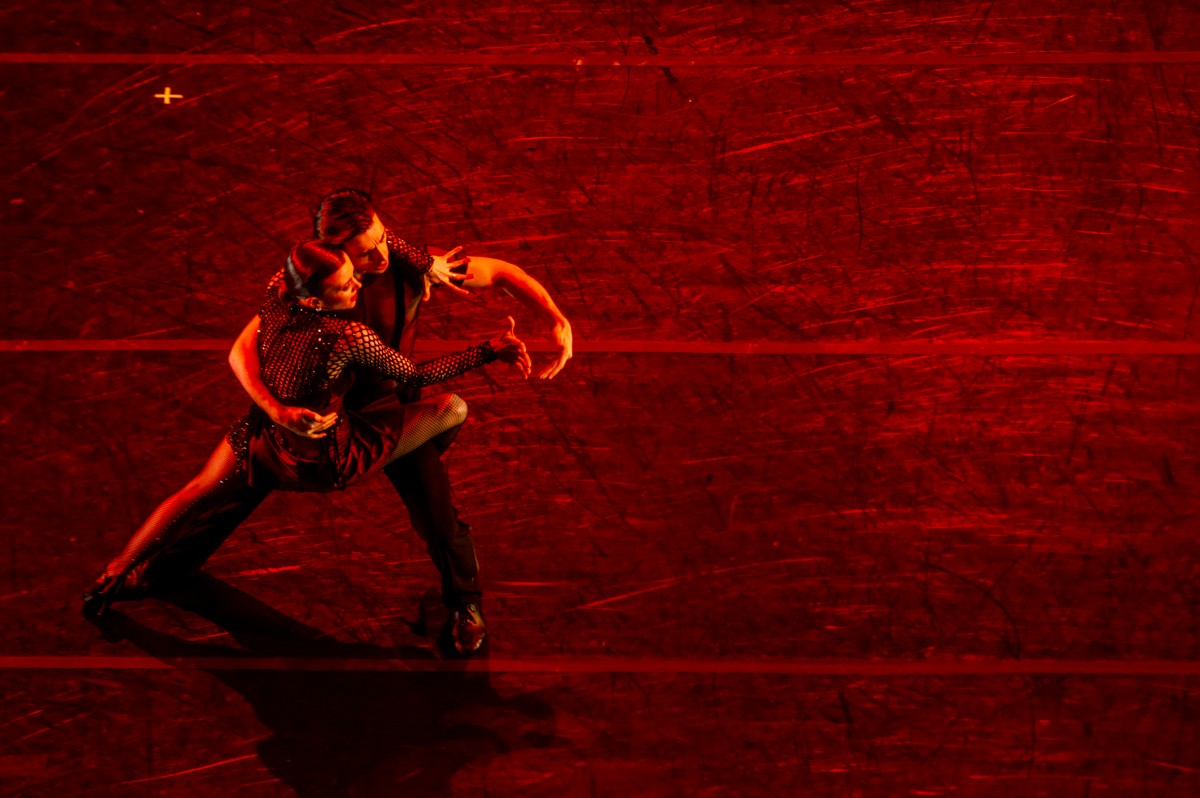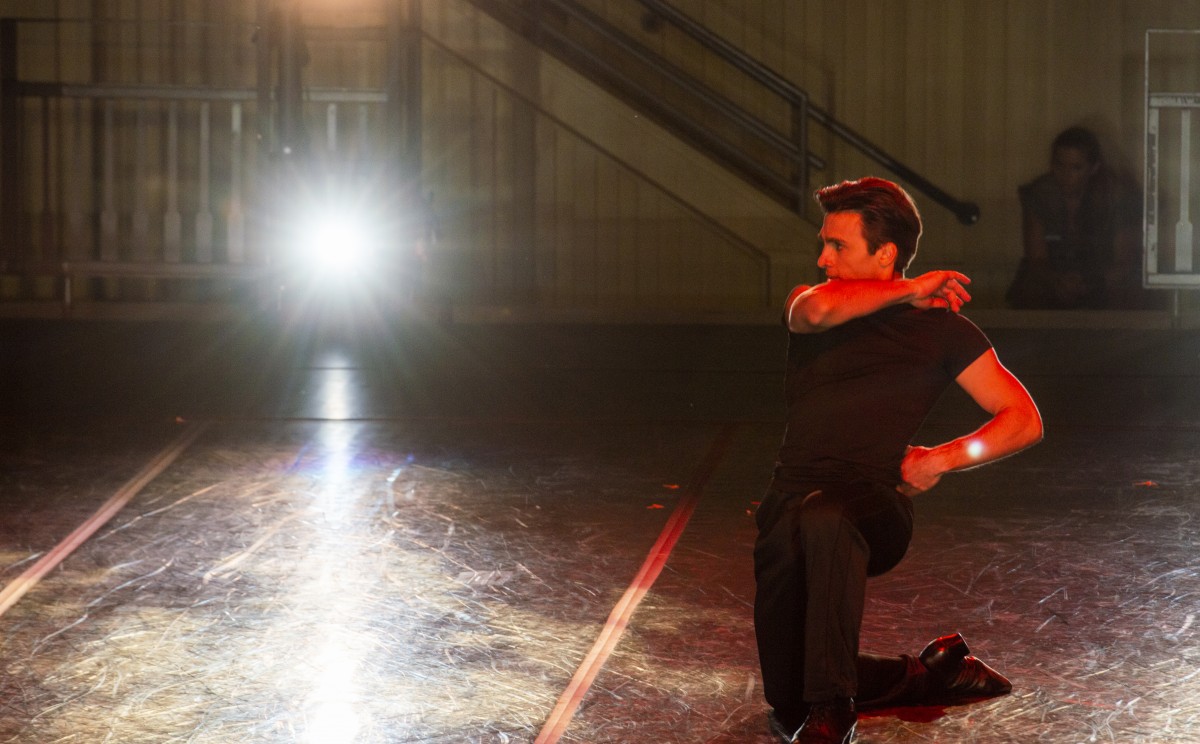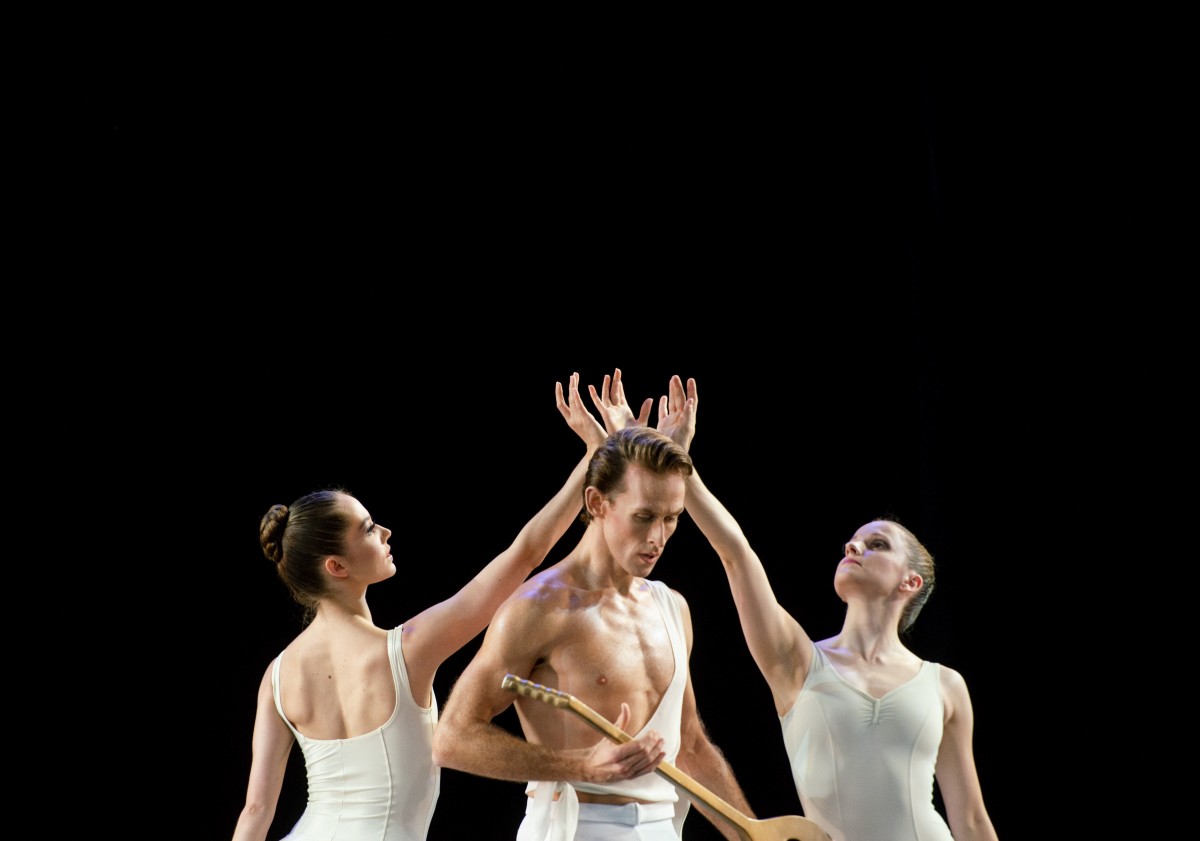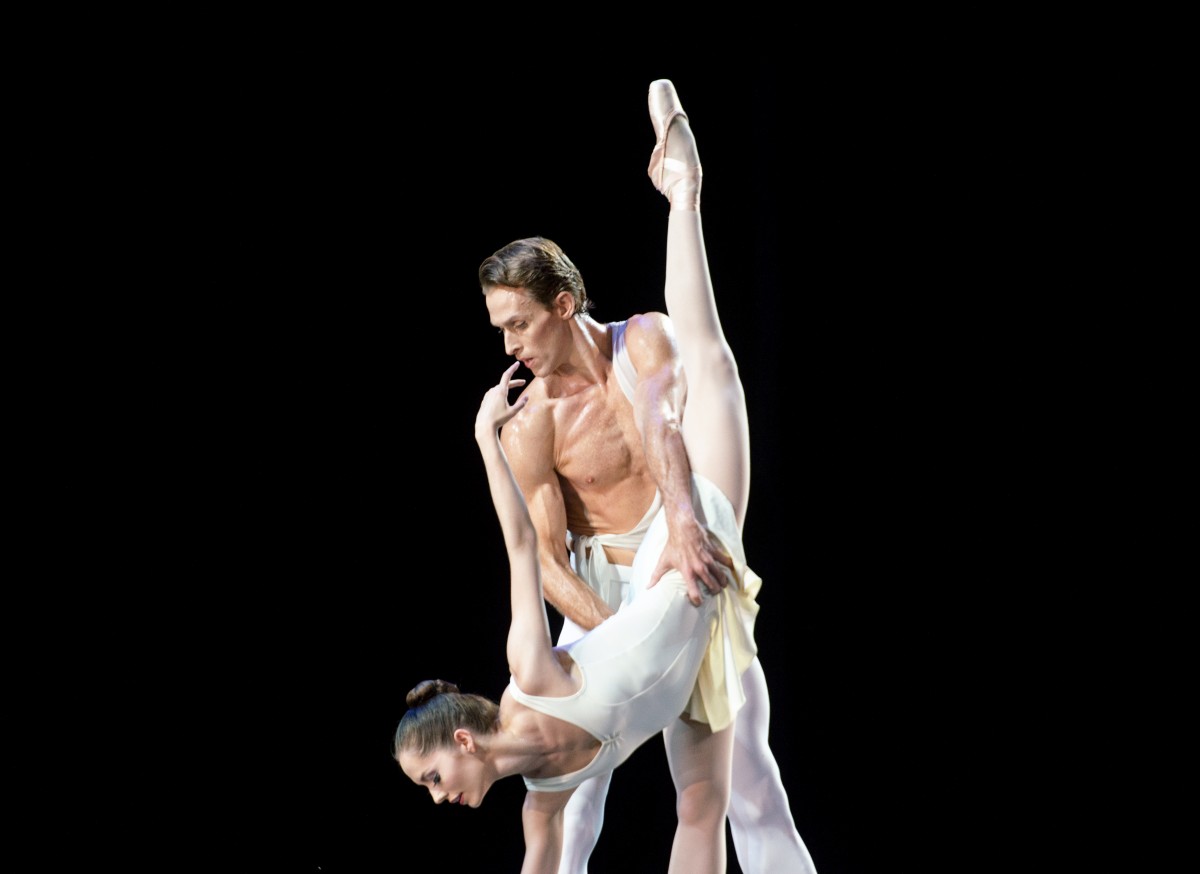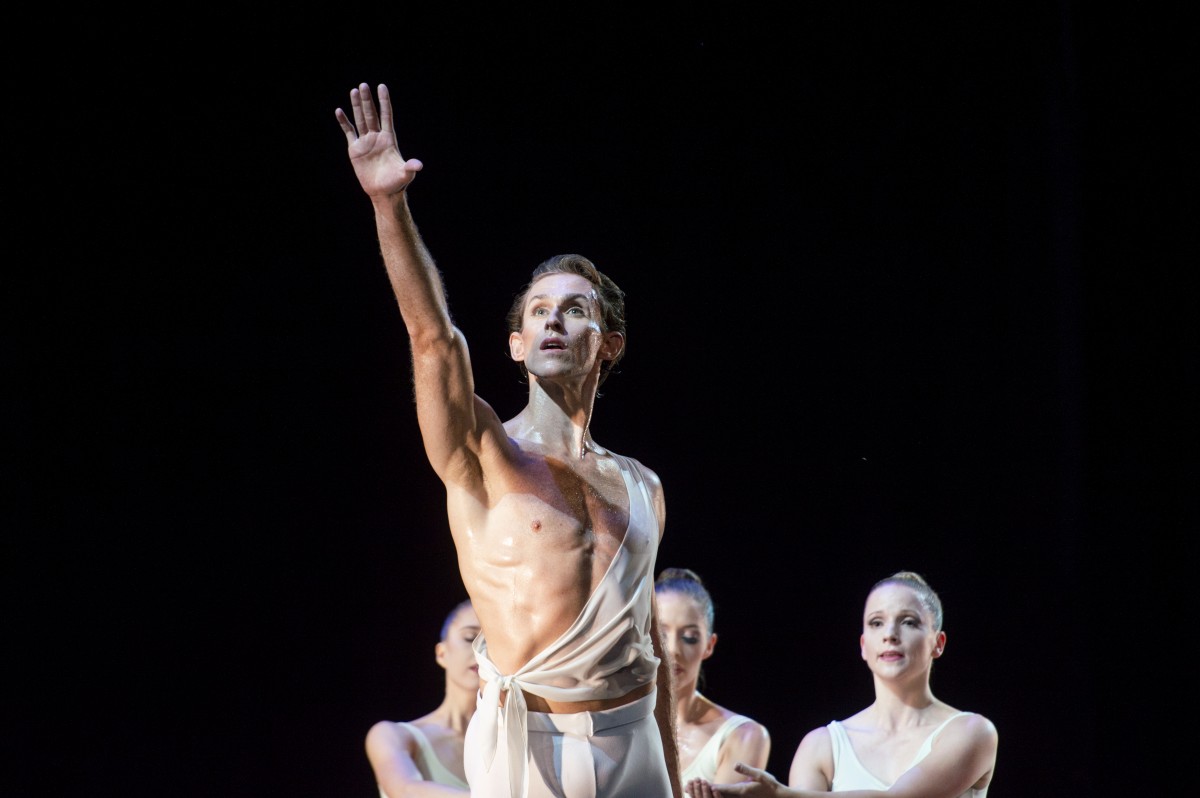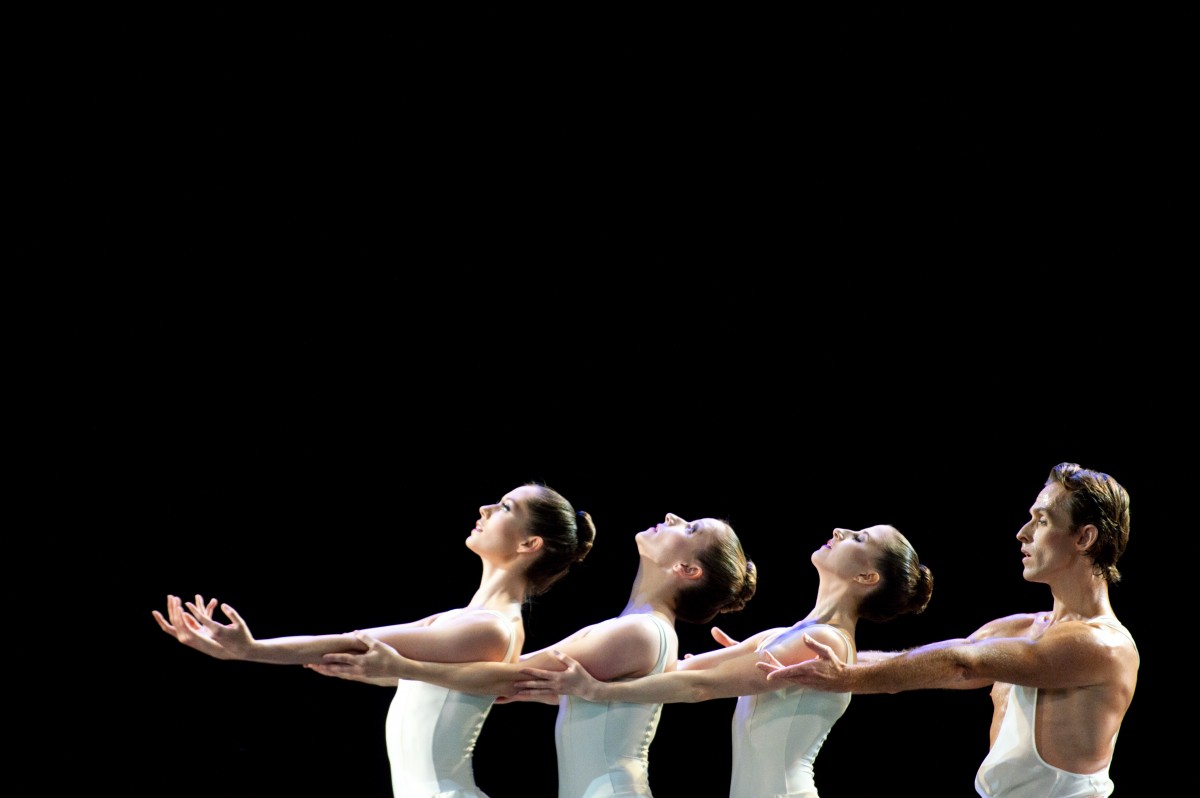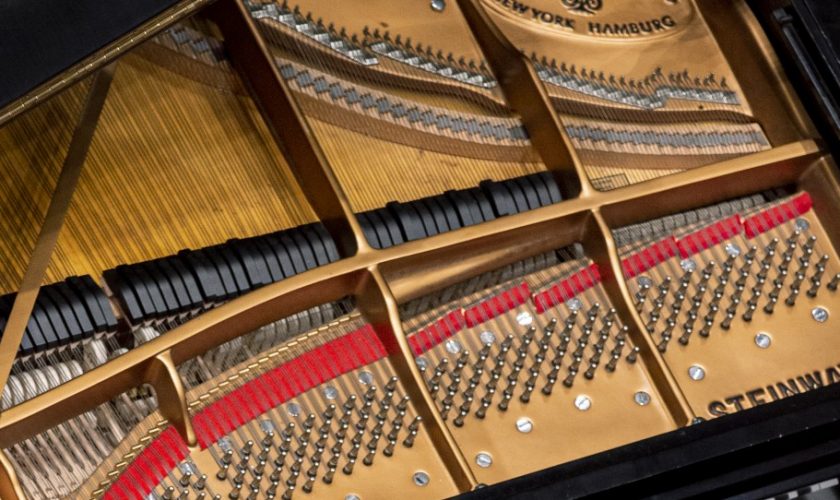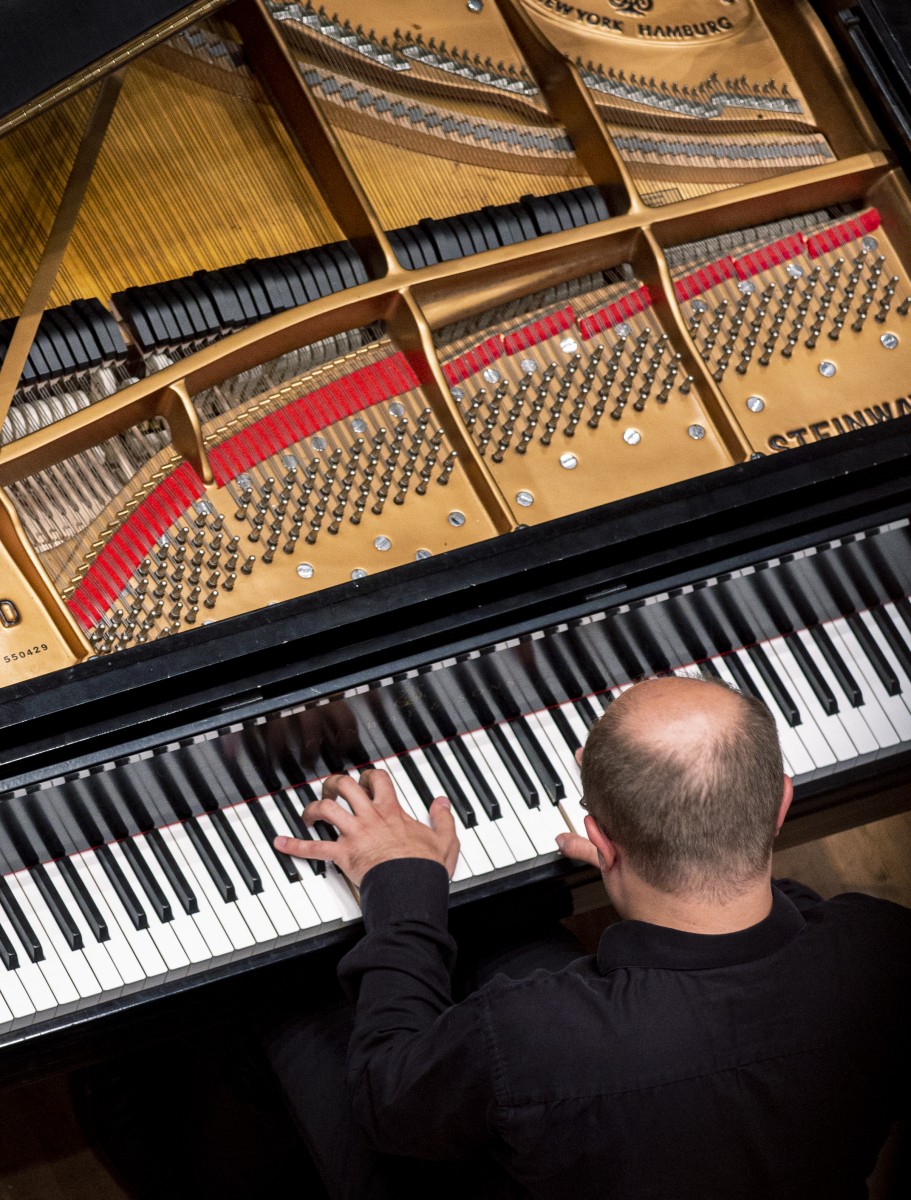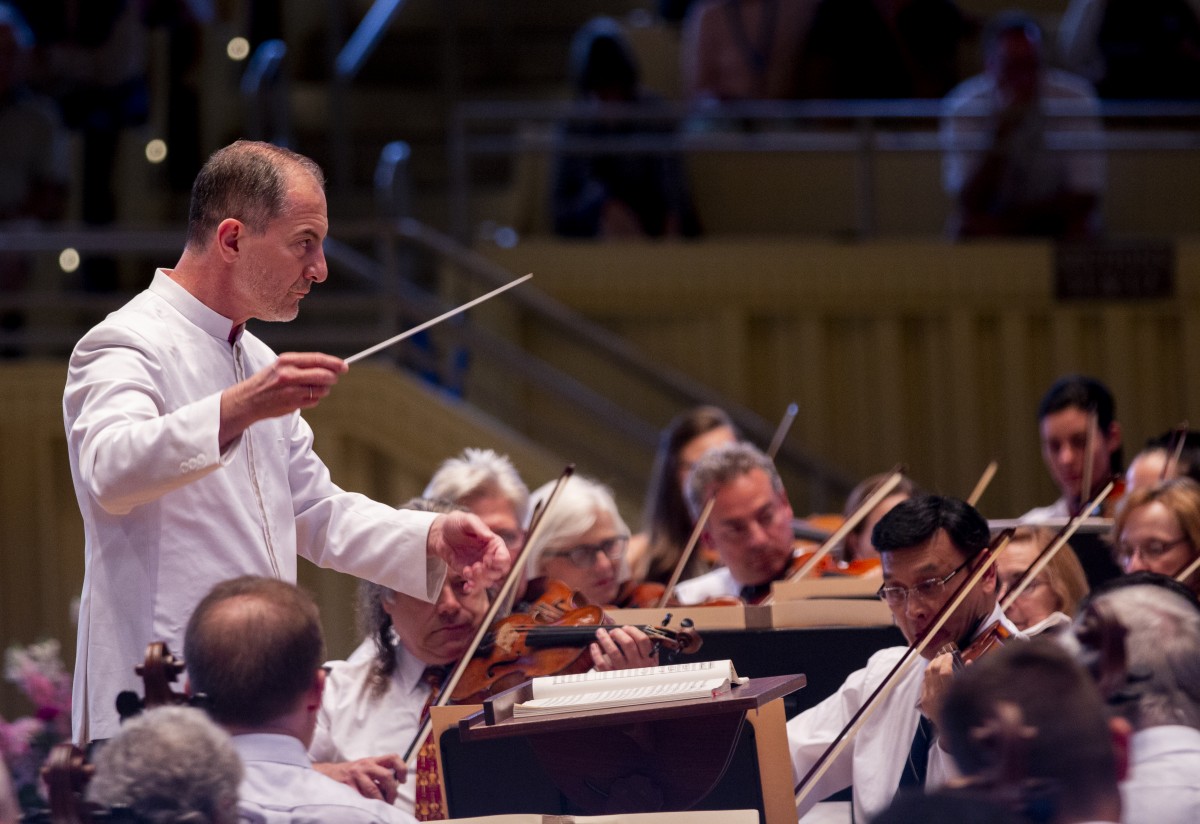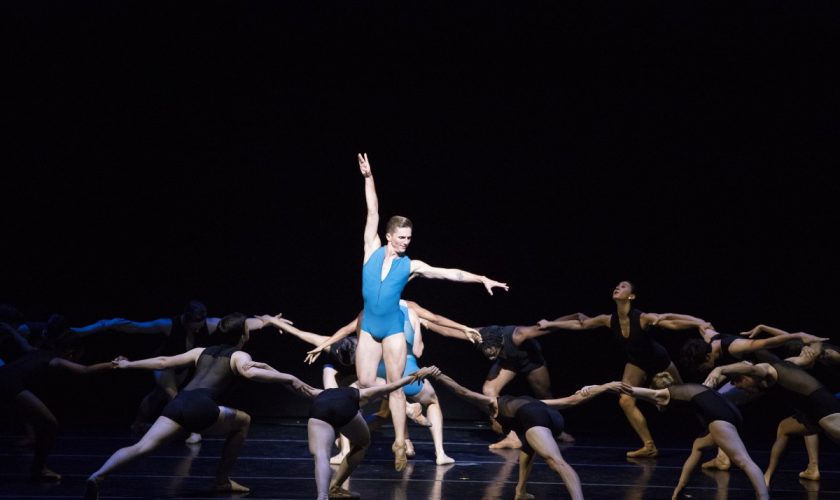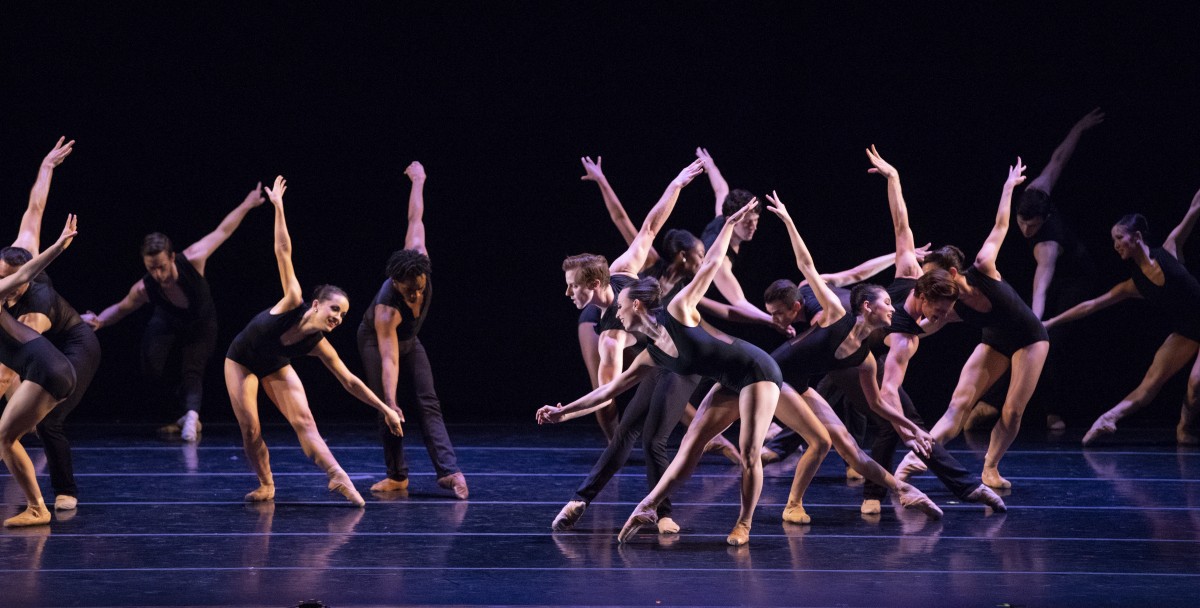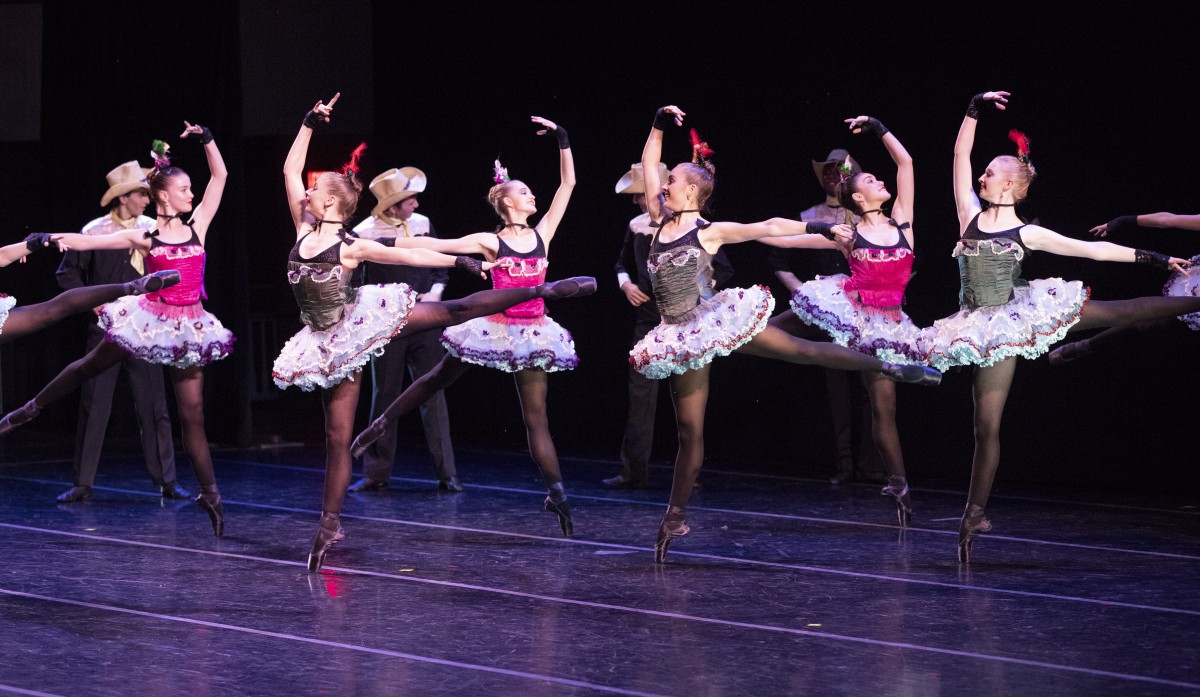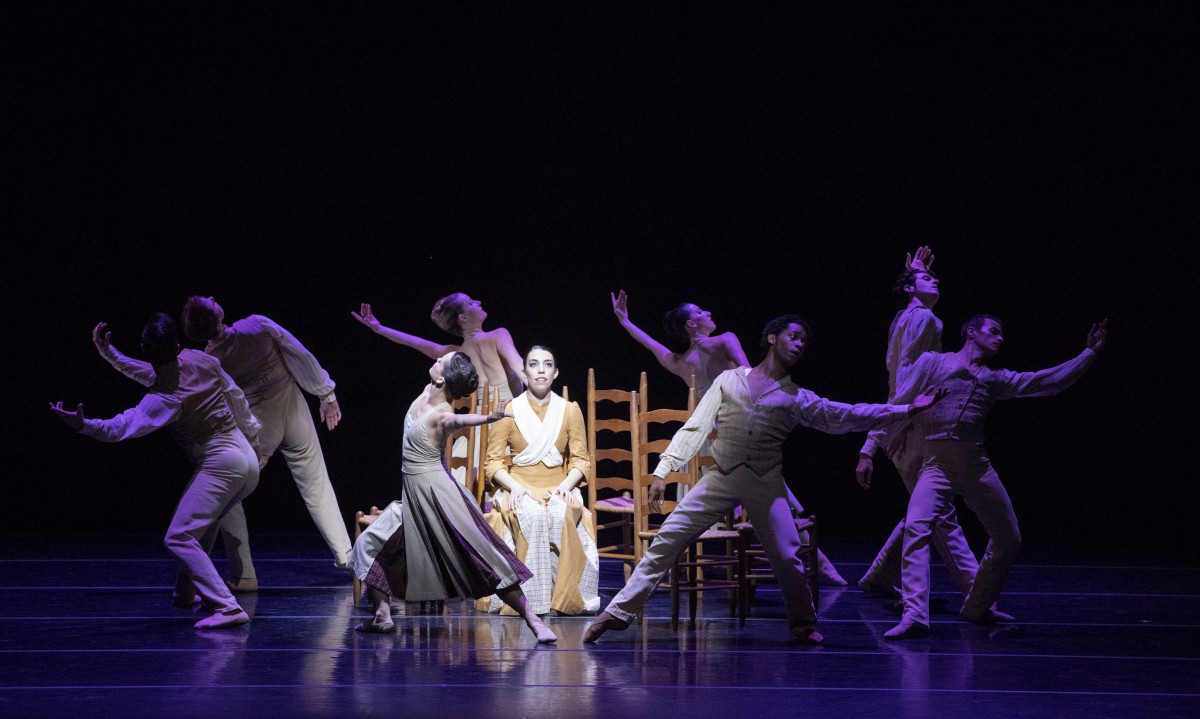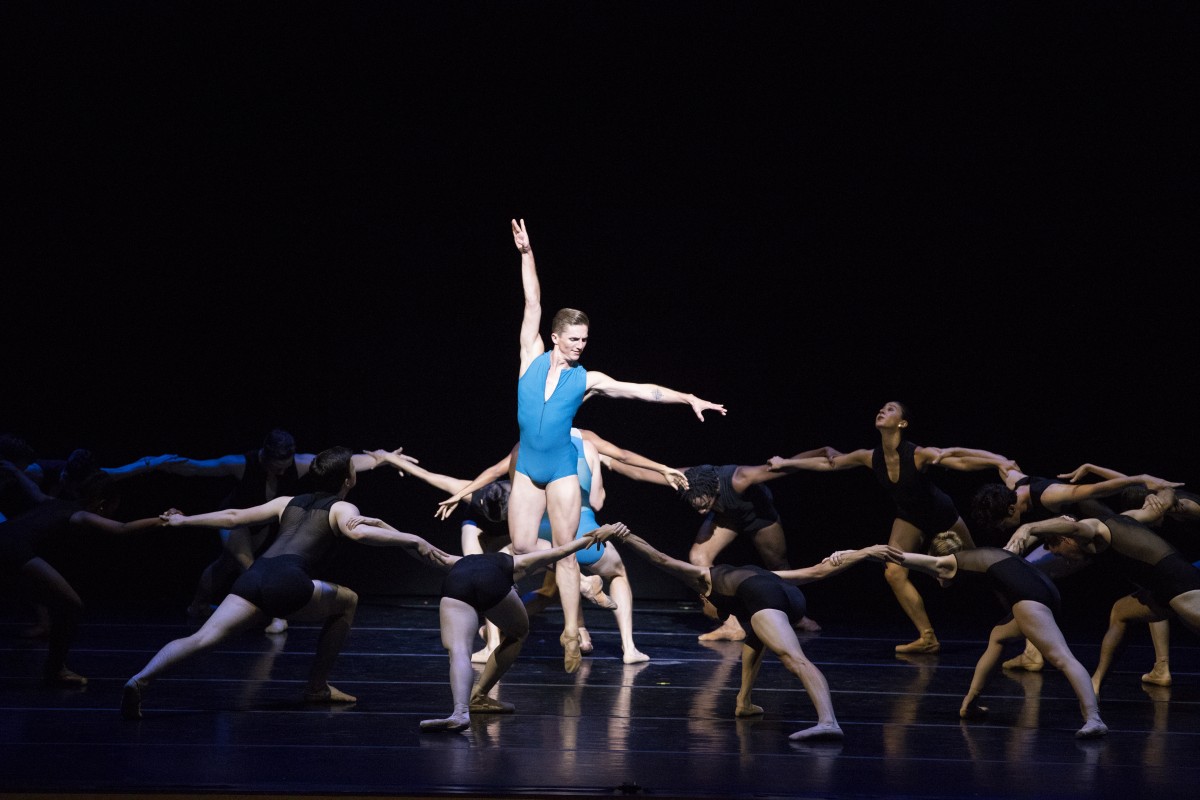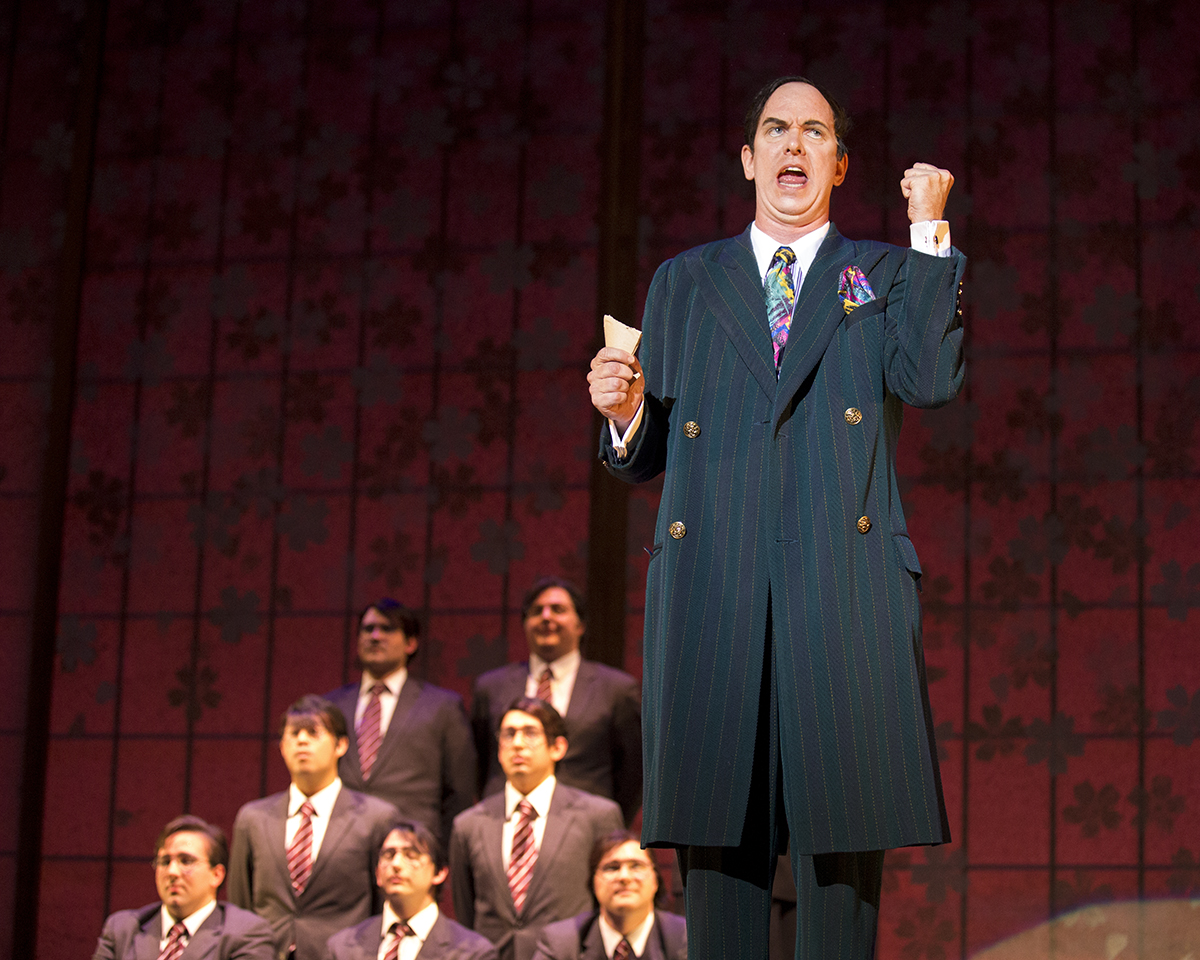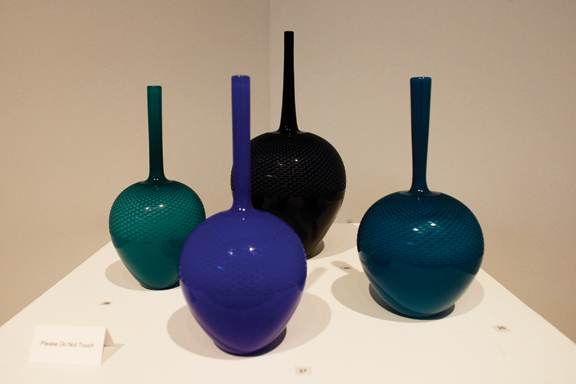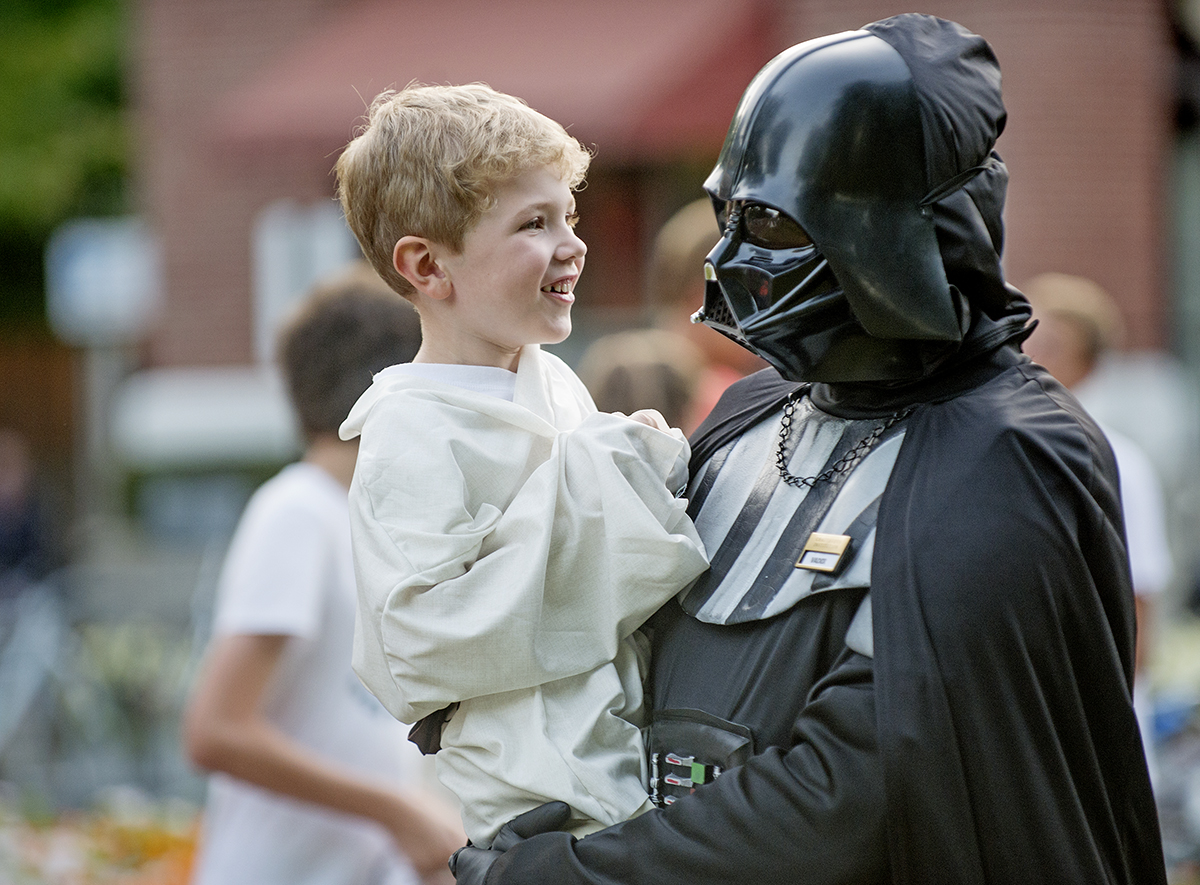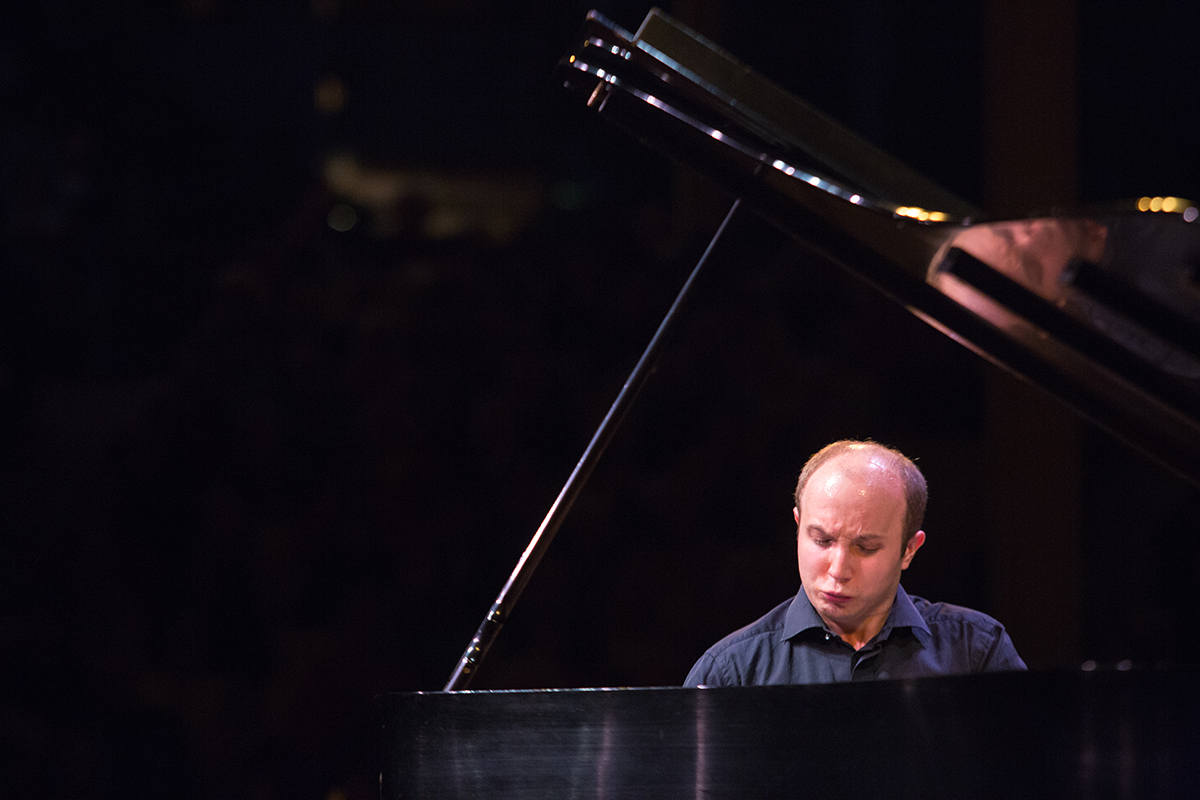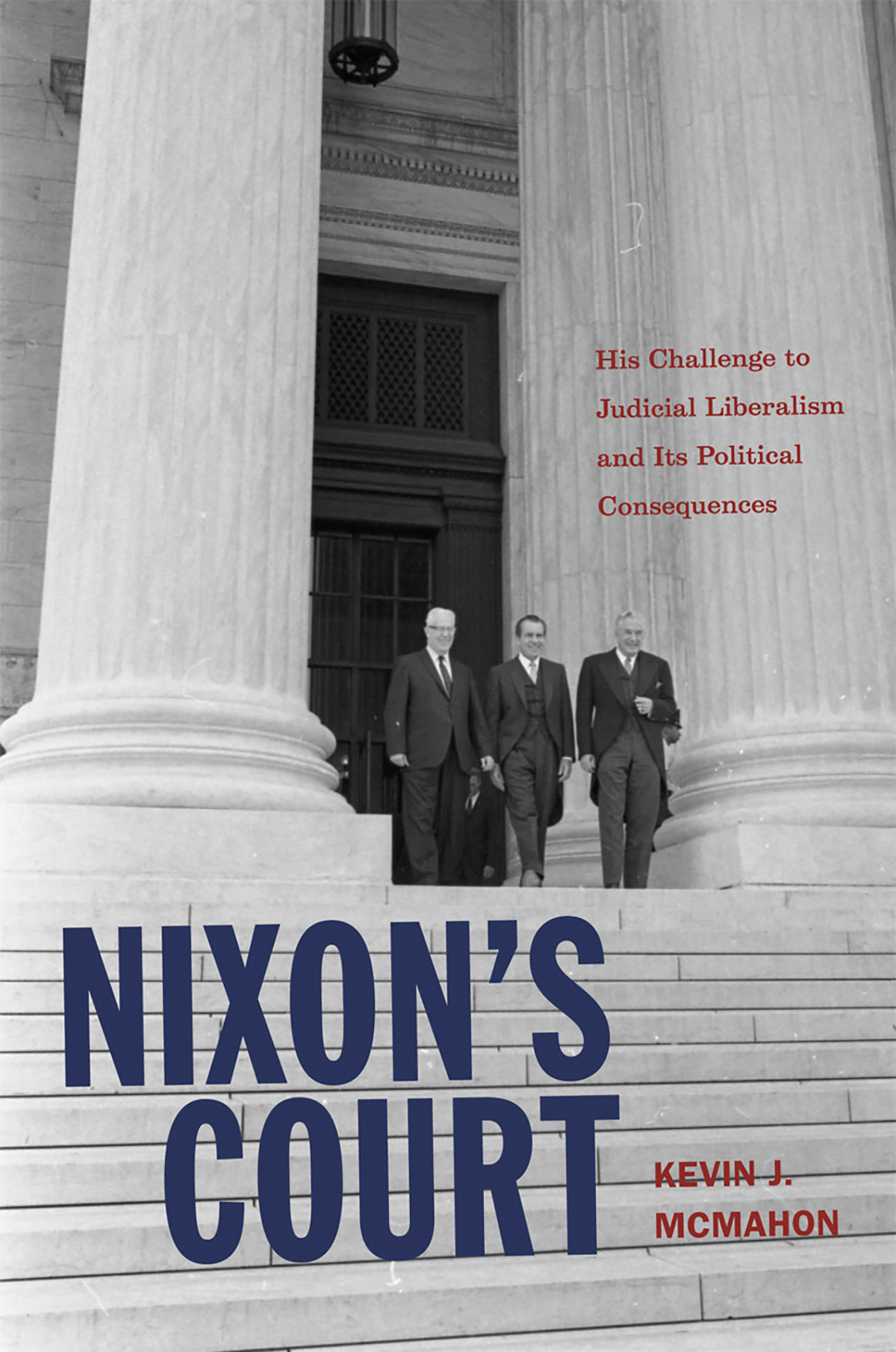Review by Vicky A. Clark-
Two of the three exhibitions at the Strohl Art Center celebrate variety. Choosing broad categories as her organizing principle gave Judy Barie, the Susan and John Turbin Director of VACI Galleries, the freedom to mix and match small sculptures in one and works on paper in the other, highlighting different approaches and materials. This diversity is especially evident in “Small Sculptures: Big Impact.”
There is something for everyone in this show from colorful glass vessels to formal arrangements of geometric shapes; from ritualistic ceramic pots to narratives captured in small capsules. The success of the show is aided by an installation that allows for an initial impression of the group, but then allows each object to stand on its own. While weighed heavily toward clay and glass, the objects are quite different in intent, technique and form, making for a fun show.
Bringing an “Alice in Wonderland” magic to ceramic and porcelain pieces is Korean-born Ahrong Kim. In “Let it Rain,” she stacks three faces, a human with a brightly flowered hat, a dog — don’t miss its backside — and a sad figure in a boat wiping away tears. A large, puffy rain cloud hovers over it. What does this odd juxtaposition mean? Has something happened to the dog or the human? Who knows? The piece is like a dream without a clear narrative, allowing for an imaginative interpretation. Kim works from her own emotions, “the voices we hear from inside,” to create a visual diary. Similar cartoony characters with bright accents populate her other pieces. She adds decorative objects and patterns, but this patchwork effect actually derives from a traditional Korean fabric technique, jogakbo, where scraps are reclaimed and reused to create new cloth. Kim melds both aesthetic and narrative disparities into fun, innovative pieces reminiscent of fairy tales and literature with pop-cartoon characters in cross-cultural improvisation.
While Kim imagines personal, emotional states, John Sharvin, who lives and works in Pittsburgh, imagines different worlds in his small-scale dioramas in glass capsules. He is fascinated by memories, real and imagined; and his pieces, like Kim’s, require close looking. “Crystal Dream Capsule” contains two competing landscapes separated by a wooden disk. Like an hourglass, it is tempting to turn the sculpture upside down, and interestingly in 2011, Sharvin made a series of hourglass pieces filled with sand. While the upper part contains miniature trees, the lower part resembles a cave with crystal formations that could be stalagmites or stalactites, depending on your orientation. Spelunking figures — two tiny HO railroad figures — animate the scene, adding a dose of storytelling. Despite calling this a dreamscape, Sharvin based his piece on an actual crystal cave he read about in National Geographic, so he is combining fact and fiction in a fun narrative.
The artist has a great sense of humor in “Scenic Overlook,” which features a glass upper torso that supports a tiny deck where a man, another HO figure, sits on a tiny bench. He reflects on nature, perhaps contemplating how small he is in this “natural” world, by enjoying the view of trees that sprout from the head and shoulders of the torso.
Sharvin’s ability to fabricate small glass objects to combine with the HO figures adds even more interest. His capsules become miniature natural history dioramas, containing a hint of social history or scientific presentation. By mixing the real and the imagined, he makes us think about the relationship between fact and fiction while we marvel at his inventiveness.
Sharif Bey brings a whole other level of meaning to his work in the show. His two “Ceremonial Vessels” speak to ideas of power and history, especially by referencing the contested history of the colonization of Africa. His vessels begin life as typical vase-like forms that are then pierced with shards, creating a rough surface that hints at danger. The smooth, stylized bird atop the pieces is elegant in contrast, and the two parts suggest the sky over earth. Bey brings his interest in African ritual vessels to his work, referencing both personal identity and a cultural collective in objects of power and ritual. These kinds of objects, usually seen out of their original context in museum and private collections, have a contested history. Prized by colonizers and traders, they were stripped from their original use to become consumer goods, materialistic possessions, paralleling the power imbalance of colonization. Artists like Bey are influenced by that history as they reclaim the forms as part of black culture. In other works, he was influenced by the popular Central African nail fetish figures, joining artists such as Renée Stout, Vanessa German and Pascale Marthine Tayou in making artifacts for a new generation. His work could easily have placed in another Chautauqua exhibition, “Reconstructing Identities.”
Bey grew up in an African American family in Pittsburgh, and earned a doctorate with a dissertation titled, “Aaron Douglas and Hale Woodruff: The Social Responsibility and Expanded Pedagogy of the Black Artist.” He brings his understanding of race and global politics to not only his art but also to his teaching at Syracuse University, and he uses his knowledge to add an ideological rigor to the work in this show.
An interesting aspect of this exhibition is the title itself. Some of the work would usually be seen in a craft context while other pieces question the boundaries of traditional craft forms. Some works look and feel like sculpture on a small scale. This leaves open the definitions of sculpture and craft. These categories have been questioned and stretched for the last half century, and the gap between art and craft in general is slowly narrowing. By including such a variety of work in this show and using the word “sculpture,” Barie seems to advocate for an expansion of the definition. Many curators would have used the more generalized category of “objects,” so her choice is interesting. These terms, like almost every aspect of contemporary art, are undergoing a critical reevaluation, something that adds another level of interest to this show.
Vicky A. Clark is an independent curator, critic and teacher based in Pittsburgh. Throughout her 30 years in the Pittsburgh art scene, she has served as a curator for the Carnegie Museum of Art, the Pittsburgh Center for the Arts, and curated “The Popular Salon for the People: Associate Artists at the Carnegie Museum of Art” exhibition.

